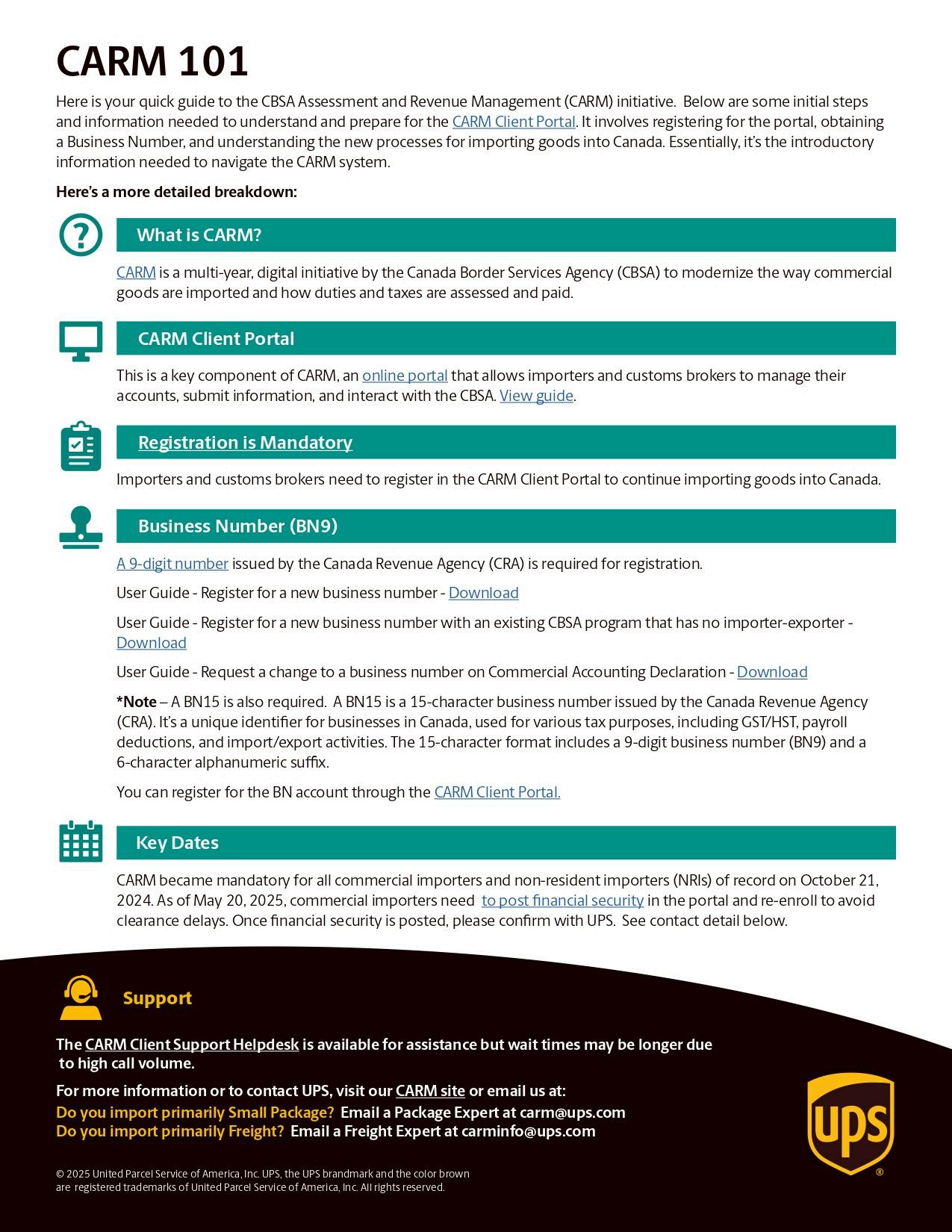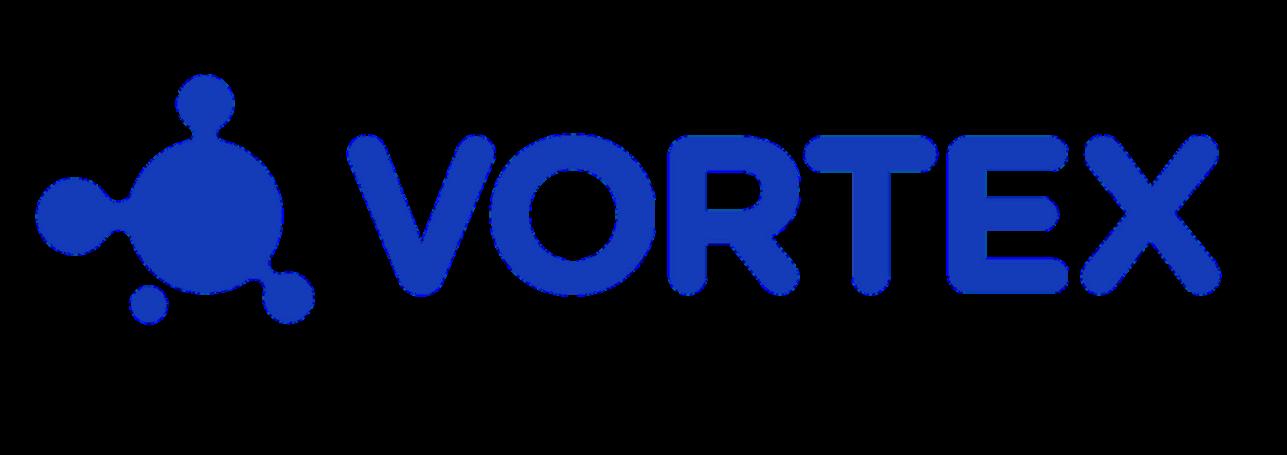

Breaking Barriers:











DearValuedReaders,
InthisAugust2025editionofCanadianSMESmallBusinessMagazine, weshineaspotlightonthedynamicgrowthandevolutionofsmall businessesinCanada,focusingonthelatesttrendsinbusiness development,technology,andentrepreneurship Thisissuebrings togetherexpertinsights,valuableresources,andsuccessstoriesthat willempowerentrepreneurstonavigatetheever-changinglandscape ofbusinessgrowth
Ourspecialfocusthismonthisonthedevelopmentofsmall businesses,withaparticularemphasisonresiliencethroughthe businesscycle.We'rethrilledtofeatureanexclusiveinterviewwith KarenSvendsen,SeniorDirectorofSmallBusinessClientand PartnershipsatRBC,whereshesharesherexpertiseonbuilding resilienceforsmallbusinesses.Wealsoexplorethepivotalroleof technologyindrivinggrowth,withacomprehensivearticlebyAmazon AdsonrisingCanadianentrepreneursandtheirbreakthroughsin business.
Inaddition,wefeatureinsightsfromLauraDonaldson,Headof Marketing,MobileatSamsungElectronicsCanada,onhowSamsung’s latestfoldablesandAIinnovationsareshapingmobiletechnologyand benefitingsmallbusinesses Auth0'sGregRainbirdoffersvaluable perspectivesonwhyidentitymanagementshouldbeapriorityfor everyCanadiansmallbusiness


wwwcanadiansmeca info@canadiansmeca canadiansme

canadian sme canadiansme canadiansme
Thismonth’sBusinessWomanoftheMonth,Dr.KimFoster,sharesher inspiringjourneyfrombeingaburned-outfamilydoctorto empoweringwomen’swellnessacrossCanadathroughherWellness CoachAcademy WealsohearfromHeatherHaslam,VPofMarketing atADPCanada,assheexploresthefutureofworkhappinessin Canada
OurcoveragecontinueswithexcitingnewsabouttheCanadianSME SmallBusinessSummit2025,takingplaceonOctober24th,2025,at theMetroTorontoConventionCentre Thisyear’ssummittheme,AIDrivenInnovation:EmpoweringCanadianSMEs,willfocusonhowAIis transformingsmallbusinessesacrossCanada
We’realsoexcitedtoannouncetheCanadaBusinessTalksseries, whereMuralySrinarayanathas,ExecutiveChairmanandCo-Founder of369Global,willjoinusonAugust21st,2025,from2:30PMto3:30PM (EST)todiscusshisinsightsonbusinessgrowthandinnovation

Wehopethiseditionprovidesyouwiththeinsightsandinspirationto takeyourbusinesstothenextlevel
Thankyouforyourcontinuedsupportaswecelebratethesuccess, innovation,andresilienceofsmallbusinessesacrossCanada.
Warmregards, ShaikKhaleeluddin(SK) Editor-in-Chief,CanadianSMESmallBusinessMagazine


ISSN2562-0657(Online)

PublishedbyCmarketingInc 2800SkymarkAvenue,Suite203, Mississauga,ON Canada L4W5A6
Copyright©2024CMarketingInc Allrightsreserved Reproductioninwholeorpartofanytext,photography orillustrationswithoutwrittenpermissionfromthe publisherisprohibited.
ThecontentsinCanadianSMEMagazinearefor informationalpurposesonly.NeitherCmarketingInc,the publishersnoranyofitspartners,employeesoraffiliates acceptanyliabilitywhatsoeverforanydirector consequentiallossarisingfromanyuseofitscontents
INTHISISSUE

The Rise of Young Canadian Entrepreneurs in the Digital and Sustainable Economy of 2025
Top AI and Tech Tools Every Canadian Small Business Needs in 2025
Social Commerce & MicroInfluencers: Canadian SME Digital Marketing Playbook 2025
Chinese Canadian SMEs: A Dynamic Force in Canada’s Economy and Culture
The Unity Principle Why "Us" Is the Most Persuasive Word in Business
Mobile and Cloud CRM: Empowering Canadian Small Businesses in 2025
How Canadian Small Businesses Can Build a
Edge in 2025?






INTHISISSUE

Building small business resilience through the cycle: A Q&A with RBC’s Karen Svendsen

A1 Global College Honoured with Canadian Choice Award in Education at 2025 Gala

Beyond DEI: Human-First Leadership with


How Canadian SMBs can close the AI adoption gap

Buildingsmall businessresilience throughthecycle:
A Q&A with RBC’s Karen Svendsen
Our editor, SK Uddin, had the privilege of sitting down with Karen Svendsen, Senior Director, Small Business Client and Partnerships at RBC, for an engaging discussion on the evolving landscape of entrepreneurship in Canada. In this insightful conversation, Karen shared how RBC is empowering small business owners to navigate uncertainty, drive innovation, and achieve sustainable growth She also highlighted practical strategies and tools that RBC offers to help entrepreneurs succeed in today’s fast-changing business environment
You’ve worked with small business owners through all kinds of cycles. What feels different or unique about this moment?
What feels different right now is the level of complexity small business owners are facing In just the past few years, they’ve had to navigate recessions, manage supply chain disruptions, compete for talent, adjust to rising interest rates, and respond to global pandemics – all while adopting new technologies and keeping up with rapidly shifting consumer expectations.
Now, businesses are being asked to adapt faster and more decisively than ever before
What also stands out is that these changes don’t feel temporary There’s a sense that the landscape has fundamentally shifted, and small businesses are adjusting to a new normal – not waiting for things to go back to the way they were
At the same time, there’s an opportunity We’re seeing a stronger push to support Canadian businesses because it feels good and tangible Small businesses are well-positioned to tap into that momentum and build deeper local connections.
We’re also seeing growth in digital and eCommerce. That creates new avenues to reach customers, but it also creates pressure – because small business owners are doing it all They’re running day-to-day operations, managing hiring, serving clients, and planning for growth at the same time

Karen Svendsen SeniorDirector,SmallBusinessClient andPartnershipsatRBC
Karen Svendsen, Senior Director Small Business Client and Partnerships, is responsible for setting the strategic direction and priorities for Small Business in Canada at RBC. A career long advocate for Small businesses and their owners, she leads cross functional teams to deliver innovation for tomorrow, and solutions for today, as Small businesses start, manage and grow their business
She has more than 25 years of financial services experience with RBC across retail and commercial banking, role strategy and design, and client strategy Her experience includes leading key programs to accelerate client acquisition and growth, transform employee engagement and capability, and foster deeper client connections
Karen has a Bachelor of Fine Arts in Theatre from York University and is a believer in the role creativity and a foundation in the humanities contributes to business solutions
That’s where RBC can help Our role is to meet them where they are and help them go further –whether that’s through advice, digital tools, or solutions that go beyond banking
The RBC Economics team was recently interviewed, sharing macroeconomic and sector-specific insights on how businesses can navigate these shifting times. What are your key takeaways from that interview that every small business owner should know?
My first takeaway from the interview is that all small business owners should continue to stay agile and informed The impact of the current macro-environment is being felt unevenly across sectors, but business confidence has recently shown improvement from very low levels earlier in the spring.
Second, interest rates are easing, but with uncertainty, so it’s important to monitor interestrate trends closely Refinancing debt when rates drop can ease costs but maintain flexibility, as rate cuts aren’t guaranteed Finally, trade policies could reshape opportunities Small business owners need to understand not just the broader economic picture, but also how their specific industry is evolving
Another approach I’ve seen success with is hybrid business models – for example, brick-andmortar businesses now servicing online customers, or service-based companies that offer digital subscriptions for tangible goods, which ensures a steady stream of repeat customers and greater predictability of sales
There’s also value in going to market with other businesses that align with your goals Tapping into your network whether it’s other small businesses, industry partners, or community organizations can open doors to new customer bases, shared resources, and collaborative growth opportunities Partnerships like these can help you scale faster, expand your reach, and bring more value to your clients
How are small businesses being impacted by tariffs and trade disruptions? What steps can they take to mitigate the risks they face, and where are there opportunities to diversify?
Tariffs are particularly impacting small businesses that rely heavily on imported goods or international suppliers, as increased costs and longer lead times have put pressure on margins In response, some businesses have chosen to reassess their supply chains by looking at local sourcing, nearshoring, and diversifying suppliers
What are some innovative business models or strategies that small businesses can look at adopting?
Challenging times often accelerate innovation, and we ’ re seeing many small businesses investing in data, embracing digital tools, and rethinking traditional approaches Even modest investments can help businesses punch above their weight Things like e-commerce channels, cloud-based accounting tools, and customer relationship management software can make the necessary tasks of running a business simpler and more efficient
Many businesses are also focusing on financing and risk management But just as important is maintaining a strong connection with your customers This is an opportunity for small businesses to demonstrate that they truly understand their clients by listening, adapting, and staying close to their needs during times of uncertainty
At the same time, it can be helpful to monitor customer behavior closely. Pay attention to both what’s selling and what’s stalling those signals can reveal opportunities to pivot, refine your offering, or meet an emerging need
Tools like RBC’s Insight Edge™ platform can help business owners access real-time data around customer trends, competitive benchmarks, and market intelligence so that they can reach their target customers more effectively while simultaneously optimizing their business operations
If a small business is looking to secure financing, what should business owners focus on to strengthen their application?
Having a written business plan – and regularly tracking your progress against it – is one of the best ways to demonstrate credibility when seeking capital It shows lenders and investors that you ’ ve carefully considered the risks, understand your industry, and have a clear strategy for growth
In today’s environment, its more important than ever to revisit and update your business plan to ensure it reflects both resilience and flexibility RBC offers an extensive online hub with tools such as a free Business Plan Builder, to help entrepreneurs get started with a new business or improve their existing business
It’s also important to remember that growth requires capital, and there are more funding options available than traditional financing alone RBC collaborates with Grantmatch, a leader in helping organizations secure government funding. This includes support for a wide range of businesses, non-profits, and public sector entities We’ve also worked with the Business Development Bank of Canada (BDC) to offer the Business Accelerator Loan Program – an innovative financing solution that helps small and medium-sized businesses access up to $500,000 in funding, backed by a BDC guarantee It’s designed to help growing businesses that may not yet qualify for traditional lending but still need capital to expand, innovate, or manage operating cash flow
Finally, we always encourage business owners to stay connected with their advisors At RBC, we ’ re proud to work with businesses of all sizes –through every stage of their journey and through all business cycles
How is RBC supporting small businesses right now?
At RBC, we help small business owners manage today’s challenges and plan for the future with personalized advice, digital tools, and solutions tailored to their needs
That starts with digital banking options like the RBC Digital Choice Business Account, which makes it easy to bank anytime, anywhere, while keeping business and personal finances separate and organized
We also provide solutions beyond banking. Through collaborations with Ownr, we help simplify business registration and incorporation, and with 1Password, we help small businesses protect their data and operate more securely online
To help business owners stay informed, we launched the RBC Tarrifs Navigator site – a digital platform with real-time updates on trade, tariffs, and international growth trends We also proactively share insights with clients, so they have the information they need to make decisions quickly and confidently in a changing market
Disclaimer:
The views and opinions expressed in this interview are those of the interviewee and do not necessarily reflect the official policy or position of CanadianSME Small Business Magazine The content provided is for informational purposes only and should not be construed as professional advice CanadianSME is not responsible for any actions taken based on the information provided in this interview
Breaking Barriers:
Confidence&Representation
inLeadership
Sheena Yap Chan
FounderofTheTaoofSelf-Confidence
In an exclusive interview with CanadianSME Small Business Magazine, we sit down with Sheena Yap Chan, Wall Street Journal bestselling author, keynote speaker, strategist, and host of The Tao of Self-Confidence podcast With over one million downloads and 800+ interviews, Sheena is a powerful voice for women seeking to lead with authenticity and courage
Interview by SK Uddin
Sheena Yap Chan is a Wall Street Journal bestselling author, keynote speaker, strategist, and award-winning podcaster renowned for her expertise in elevating leadership and self-confidence through media She is the founder and host of the acclaimed podcast, The Tao of SelfConfidence, where she interviews women about their journeys to self-confidence With over one million downloads, her podcast ranks among the top 0.5% most popular shows globally and features over 800 interviews, including conversations with celebrities and eight-figure CEOs.
Sheena’s influence extends beyond podcasting. Her debut book, The Tao of Self-Confidence: A Guide to Moving Beyond Trauma and Awakening the Leader Within, published by Wiley, is a Wall Street Journal and Publishers Weekly bestseller It is also recognized as one of the top 20 best self-confidence books of all time by Book Authority, the world’s leading site for book recommendations

Her second book, Bridging the Confidence Gap, also published by Wiley, continues her mission of empowering women by addressing the barriers to confidence and leadership. Her work has been featured on prominent platforms such as MindValley, FOX, NBC News, and the Manila Times
Sheena is dedicated to closing the gender confidence gap through her training and programs, aiming to elevate women into leadership roles across all industries She has delivered impactful speeches for organizations like Live Nation, NASA, and UKG, sharing her insights on self-confidence and leadership
Your journey from feeling invisible as a young immigrant to becoming a bestselling author and global speaker is incredibly inspiring. What key moments helped you turn self-doubt into confidence, and how do you guide other underrepresented women to do the same?
The sudden passing of my aunt was the wake-up call I didn’t expect It made me ask myself: Am I really living, or just existing? I realized I didnt want to reach the end of my life full of regrets That moment pushed me to stop playing small and start showing up for myself and others
Growing up in Toronto, I never saw anyone in the media who looked like me That lack of representation made me feel invisible Today, I constantly show up to help underrepresented women feel seen and heard because I know what it’s like to feel like you don’t belong
I use my platform, programs, and products to help women build confidence, own their stories, and take up space unapologetically. Whether it’s through my podcast, courses, or community events, I’m committed to creating tools that empower others to do what I once thought was impossible: believe in themselves
With over 1.3 million downloads and hundreds of stories shared, what are some of the most surprising or powerful lessons you ' ve learned from your guests on overcoming imposter syndrome and stepping into inner leadership?
The most powerful lesson is that imposter syndrome doesn’t mean you ’ re broken it means you care. Nearly every woman I’ve interviewed, no matter how accomplished, has felt like she didn’t belong at some point. The difference? They didn’t let that feeling stop them
One surprising insight is how many of them reframe imposter syndrome as a signal for growth It shows you ’ re stretching beyond your comfort zone Another is the role of community hearing “ me too” can be incredibly validating These stories prove that leadership doesn’t require perfection It’s about choosing to believe in your impact, even when your inner critic is the loudest voice in the room

You’ve said confidence is a skill, not just a mindset—especially important in fast-moving industries like tech, AI, and Web3. What daily habits or strategies do you recommend for women to bridge the confidence gap and thrive in these spaces?
Confidence is built through action, not just thinking That’s why I live by the “ready, fire, aim” mindset take the step, then course correct In industries like tech, AI, and Web3, waiting for perfection will keep you behind Progress happens when you move, not when you hesitate
Another big piece is failing forward We’re told the U S is 10–15 years ahead of Canada in tech, and one major reason is mindset they embrace failure as part of growth In Canada, we tend to avoid it But failure isn’t the opposite of success it’s the path to it Every stumble teaches you something that brings you closer to mastery.
Daily, I recommend doing one uncomfortable thing and tracking your small wins Confidence compounds when you act, learn, and repeat The women who thrive in these spaces aren’t the ones who get it perfect they’re the ones who keep showing up
Representation is at the heart of your mission. How have your own experiences with cultural identity and media shaped your leadership approach, and what advice would you give organizations aiming to build more inclusive, empowering spaces for women of color?
Growing up in Toronto, I didn’t see women who looked like me in leadership, on screen, or in spaces of influence. That lack of representation made me feel invisible like success wasn’t made for someone like me It deeply shaped how I lead today: by showing up as my full, unapologetic self and creating space for others to do the same
Visibility is power That’s why I consistently show up on stages, online, in conversations to change the narrative and remind others that they belong too The more we see diverse women in leadership, the more permission others feel to step into their own power
For organizations, real inclusion starts with listening, investing in diverse talent, and creating environments where women of color don’t just have a seat at the table they have a voice Representation isn’t a checkbox It’s a culture shift When women of color are seen, valued, and celebrated, the impact is generational.
You reached major milestones in your 40s— what message do you have for women who feel bound by timelines or fear it’s “too late”? Any final advice for small and medium-sized business leaders working to build more confident and inclusive teams?
It’s never too late to rise I published my bestselling book, spoke on global stages, and built a platform after 40 and I’m just getting started The idea that success has an expiration date is a lie we ’ ve been sold Your life doesn’t end at 30 or 40; it evolves.
To women feeling “behind,” I say: you ’ re right on time Your story, experience, and perspective are exactly what someone needs to hear today
For small and medium-sized business leaders: confidence and inclusion go hand in hand Create cultures where mistakes are safe, feedback is shared, and leadership is modeled at every level. When your team feels seen and trusted, they dont just perform they thrive
Disclaimer:
The views and opinions expressed in this interview are those of the interviewee and do not necessarily reflect the official policy or position of CanadianSME Small Business Magazine The content provided is for informational purposes only and should not be construed as professional advice CanadianSME is not responsible for any actions taken based on the information provided in this interview
From early days to business breakthroughs:
Amazon Ads spotlights Canada's rising stars entrepreneurs

Threebrandsbreakingnewground
"I knew at a certain point that if I didn't take a chance on myself now, I never would," reflects Karen Danudjaja, founder of Blume "I founded Blume almost 8 years ago It was my obsession I had never felt so passionate and excited by something " What started in her kitchen, handlabelling superfood latte blends, has grown into one of Canada's most forward-thinking wellness brands Her story is just one of many captivating entrepreneurial journeys featured in "Rising Stars by Amazon Ads", an innovative docu-series thats capturing the real stories behind Canada's growing brands.
Think "Chef's Table" meets "Dragon's Den," but with real entrepreneurs who aren't just pitching dreams – they're living them After winning hearts (and multiple awards) across five seasons in China and successful runs in Europe and the USA, Rising Stars has finally landed in Canada, bringing with it a fresh perspective on what it means to build a business in the Great White North
For Jake Karam, CEO of Liquid Rubber, that perspective meant completely reimagining his business model: "In 2016 there was zero online sales
Now, 95% of our sales go to online DIY customers " Meanwhile, at Beck's Broth, founder Beckie Prime saw an opportunity to revolutionize how people think about bone broth: "I'm a gut health nutritionist, so I was always recommending bone broth to my clients I realized that I should make bone broth taste like what they actually want to be drinking every day."
Insidethemake-or-breakmoments
But Rising Stars isn't just about celebrating success stories it's about pulling back the curtain on the real, sometimes messy, always fascinating world of entrepreneurship "The seasonality is critical," Karam explains "If you don't do it now, you ' re just simply going to miss it The U S market allows us to really pay the bills over the winter It allows us cash flow that can even things out for us in those months where Canada has no sales "


The series dives deep into the moments that make or break a business We follow Blume through their most ambitious launch weekend yet: "Two events happening simultaneously I would not have planned it that way In a perfect world, the team wouldn't be so stretched," Karen admits, as her team navigates both a major trade show and a consumer sampling event At Liquid Rubber, a production line slowdown threatens their peak season shipping window, while Beck's Broth takes their biggest gamble yet with a new salted caramel flavor targeting the U S market
"What makes these stories so compelling is their authenticity," says Ludovic de Valon, Director of Product and SMB Marketing at Amazon Ads. "These aren't just business success stories – they're human stories of perseverance, creativity, and sometimes just plain stubbornness in the face of adversity."
"Amazon ads have been instrumental in us meeting new customers and reaching people that we wouldn't necessarily reach through a natural grocery store," Karen shares. Dominique, COO at Beck's Broth adds, "We're super strategic with Amazon ads... once you nail that down, you ' re going to see a profit, and our aim is to take that profit and reinvest it into getting new customers."
Each episode captures the real-time pressure of entrepreneurship When Blume's team splits between the CHFA Expo and Vancouver Sun Run, when Liquid Rubber races to fix a critical production issue before missing their shipping window, when Beck's Broth awaits retailer feedback on their new flavor – we see leaders making high-stakes decisions that could define their companies' futures

For Canadian entrepreneurs watching, the message isn't just about success it's about possibility As Beckie from Beck's Broth puts it, "I never dreamed of being an entrepreneur ever in my life It kind of blindsided me I'm a CEO, but I'm also trying to make sure that everybody's flourishing with what they love to do " Showingupeverywherethatcounts Aviewofleadershipfromthefrontlines
For all three businesses, Amazon Ads has become central to their growth strategy

"Amazon Ads' Rising Stars is more than a showcase of success stories; it's a testament to the resilience and innovation of Canadian entrepreneurs," says Uri Gorodzinsky, Managing Director, Amazon Ads Canada. "These business leaders are building more than companies – they're creating opportunities, fostering communities, and inspiring the next generation of Canadian innovators."
This emphasis on people and purpose resonates throughout the series, as Jake Karam notes: "How do you grow to the next level? And the answer is people We want the team to understand that what they're doing has been successful "
As we celebrate these Canadian Rising Stars, we ' re reminded of the vital role SMBs play in our economy and communities Beckie from Beck's Broth sums it up: "Since day one it's always been really important to work with small farmers or a local community to build our product, and that's the overall goal of building a business as sustainably as possible."
Is your brand next?
To watch these compelling stories and gain insights and inspiration for your own business journey, tune in to Rising Stars by Amazon Ads. Who knows? Next season might just feature your entrepreneurial adventure, whether you ' re brewing up the next superfood sensation, sealing the deal on innovative home solutions, or cooking up a storm in the world of health-conscious beverages

Why Canadian Small Businesses Can’t Afford to Ignore Identity Management
ByGregRainbird,EnterpriseMarketLead,Auth0atOkta
In today’s digital-first economy, trust is everything, and it’s becoming harder to earn and easier to lose
According to Okta’s 2025 Customer Identity Trends Report, 76% of Canadians say they would stop doing business with a company after a data breach This is more than a security issue, it’s a business imperative. And for Canadian small businesses, which make up 98 percent of all businesses in the country, this should be a wake-up call
Despite playing a critical role in our economy, SMBs are struggling to gain consumer trust in the digital realm Only 27% of Canadians say they trust small online retailers with their personal data, that’s compared to 66% for banks and financial institutions This gap underscores an urgent reality: for small businesses to compete and thrive, they need to put identity at the centre of their digital strategies
Identity is the foundation of trust, and small businesses must take steps to strengthen it That means going beyond firewalls and antivirus software, and adopting modern identity management practices such as multi-factor authentication, secure customer verification, and privacy-first data policies
These are front-line business enablers that directly impact customer experience When people know their data is protected and their login process is simple, they stay longer and come back more often
Okta’s identity platform makes this easy, giving small businesses enterprise-grade tools that are easy to implement, scalable, and designed to protect both customers and the brand For SMBs, prioritizing identity management isn’t just a defensive move, it’s a way to build confidence, protect reputation, and grow the customer base

AdaptingidentityfortheageofAI
As AI-powered tools become more common in customer service and operations, identity management needs to evolve, too While automation offers efficiency, it also raises red flags: 83% of Canadians still prefer to interact with a human, and 56% dont trust AI to handle their personal data
This doesn’t mean small businesses should avoid AI, but they must be thoughtful about how it’s integrated AI systems are a new kind of identity They make decisions, access data, and even hold admin privileges Without proper controls, they pose a real risk
That’s why Okta is helping developers embed identity directly into AI systems, including through tools like Auth0 for GenAI. For small businesses, securing these non-human identities from the start is essential to staying ahead of the curve and protecting trust in the age of AI

Balancingsecurityandexperience
Canadians are worried about identity fraud, 67% express concern, but many still reuse passwords because secure options feel too complicated 65% admit to using the same passwords across multiple accounts
This is where SMBs can lead by example With solutions like passwordless authentication, biometrics, and context-aware access, small businesses can offer a more secure and seamless experience
Okta helps businesses deliver both stronger protection for users and lower friction at signin Protecting identity shouldn’t mean compromising convenience When customers can access services quickly and securely without remembering complex passwords, they’re more likely to trust and return to your business
Thepathforward
For SMBs, cybersecurity is now a business continuity issue In an era where a single breach can result in lost customers, damaged reputations, and stalled growth, strong identity management is one of the smartest investments a business can make
Canadian small businesses are resilient, entrepreneurial, and customer-focused. By making identity a core part of their digital operations and leveraging solutions like Okta, they can meet rising expectations, protect their communities, and build the trust that fuels long-term success
Greg Rainbird, Enterprise Market Lead, Auth0 at Okta

Shaping the Future of Mobile
Interview by Maheen Bari
We recently had the pleasure of connecting with Laura Donaldson, Head of Marketing, Mobile at Samsung Electronics Canada, to gain insights into their latest product launch With a wealth of experience leading innovative campaigns and elevating Samsung’s brand presence in Canada, Laura shares the exciting developments in their foldable lineup and how AI is transforming user experiences
Laura Donaldson is the Head of Mobile Marketing at Samsung Electronics Canada, where she leads strategic efforts to engage Gen Z and Gen Alpha audiences Known for her rare blend of media expertise, consumer insight, and marketing strategy, Laura has earned strong industry endorsements for her ability to translate data into compelling brand narratives.
She began her career at Samsung in 2013, later holding strategic roles at Bell Media and Mindshare, where she specialized in marketing sciences Returning to Samsung in 2021, she was named head of mobile marketing in 2023
Laura is praised for her instinct for emerging trends and her ability to distill complex insights into actionable strategies Her work has helped position Samsung as a cultural leader through storytelling, partnerships, and experiential campaigns Widely regarded as a future industry leader, Laura continues to shape the brand’s presence in Canada’s evolving digital and mobile landscape.
Laura, thank you for joining us. Can you tell us more about what Samsung has recently launched in Canada?
Were thrilled to introduce two new products in our foldable lineup: the Galaxy Z Fold7 and the Galaxy Z Flip7 Along with some new wearables: the Galaxy Watch8 and Galaxy Watch8 Classic These are the thinnest and slimmest foldables we ' ve brought to market yet, and we ’ re continuing to push the boundaries of innovation in mobile and wearables.
What are the standout features of the Galaxy Z Fold7?
The Galaxy Z Fold7 brings an ultra-premium experience to the foldable segment It now features a 200-megapixel camera, offering stunning clarity. We’ve also made significant optimizations in how apps work on the larger, expansive screen especially to support our Galaxy AI and Gemini Live technologies

How does AI enhance the user experience in these new foldables?
Our integration of Galaxy AI and Gemini Live ensures users get the intelligent and intuitive performance they expect similar to what they'd find in a traditional bar type smartphone, now optimized for this unique form factor
Any final thoughts on what this launch means for Canadian consumers?
This launch is about redefining what’s possible with mobile devices blending innovation, creativity, and usability We’re excited to see how Canadians embrace these new experiences

Disclaimer:
The views and opinions expressed in this interview are those of the interviewee and do not necessarily reflect the official policy or position of CanadianSME Small Business Magazine. The content provided is for informational purposes only and should not be construed as professional advice CanadianSME is not responsible for any actions taken based on the information provided in this interview

ImageCourtesy:SamsungCanada
ImageCourtesy:SamsungCanada
Unlocking Canada’s Work Happiness
In an exclusive interview with CanadianSME Small Business Magazine, Heather Haslam, Vice President of Marketing at ADP Canada, sheds light on the evolving landscape of employee satisfaction and what it means for today’s business leaders. Drawing from ADP Canada’s Happiness@Work Index, Heather offers a datadriven perspective on what truly makes Canadian employees feel valued and why that matters more than ever.
With more than two decades of experience in the Canadian tech sector, Heather brings practical insight into how businesses can foster flexibility, inclusivity, and a culture of respect across generations
In this conversation, she shares actionable strategies for SMBs to navigate workplace stress, boost morale, and create an environment where employees feel connected and committed
Interview by SK Uddin
Heather leads the Marketing mandate to support businesses across all segments in Canada In her role, Heather provides strategic direction for marketing planning, including product marketing, campaign management, demand generation and branding
Heather has more than 20 years experience in the Canadian technology Market She is a proven, accomplished and dynamic leader specializing in motivating people for change and increased productivity with successes across Marketing, Sales Channel Development, Product agement, and Mergers & Acquisitions.

ADP Canada’s Happiness@Work Index offers a unique lens on employee sentiment nationwide. What were the most eye-opening findings from the May report, and how should Canadian businesses interpret these results?
One of the most eye-opening findings from the latest ADP Canada Happiness@Work Index is that Baby Boomers continue to lead in workplace happiness, with a score of 7 3/10 in June, despite a slight decline from 7 5/10 in May They consistently outpace younger generations, including Gen Z (6 7/10), Millennials (6 8/10), and Gen X (6 6/10), underscoring the enduring value they place on stability, respect, and flexibility As employers prepare for this group ’ s large-scale retirement by 2030, their elevated satisfaction levels offer valuable insight into what makes work meaningful.
Heather Haslam

coverage and adaptable schedules Respect, transparency, and the ability to disconnectespecially during summer - are top contributors to positive employee sentiment Canadian businesses should interpret these results as a call to action: fostering respectful, supportive, and flexible work environments is essential to maintaining satisfaction and reducing turnover across all age groups
Given your experience, why is it important for organizations to regularly measure and understand employee happiness, and how does the Happiness@Work Index help companies address evolving workforce needs?
The Happiness@Work Index provides a real-time, month-by-month pulse on what Canadians value most at work It can serve as a powerful indicator of workplace health and long-term organizational resilience By measuring happiness consistently, leaders can surface important trends and identify both pain points and opportunities across diverse employee demographics Knowing how particular regional or generational differences trend, can help people leaders, HR teams, and senior management know best when to make changes and how to communicate those evolutions
foster a healthy, multi-generational workplace where everyone feels valued and engaged?
Employers can create more inclusive and engaging workplaces by acknowledging the unique values of each generation For Boomers, drivers of happiness include stability, respect, and purpose For Gen Z and Millennials, priorities often include flexibility, career development, and transparent leadership
The Happiness@Work Index confirms these patterns While Boomers are consistently the happiest group (7 5/10 in May; 7 3/10 in June), younger generations trail slightly behind, suggesting that their needs may be less consistently met
To bridge this gap, employers can offer personalized and flexible benefits, foster intergenerational mentorship and encourage open dialogue across age groups to build mutual understanding and respect
Workplace stress—whether seasonal or ongoing—can impact both happiness and productivity. What are the main drivers of employee stress you’re seeing, and how can employers proactively address these challenges through benefits, wellness programs, or other initiatives?
The Happiness@Work Index points to several consistent stressors: lack of flexibility, lack of career advancement opportunities, limited compensation and benefits, and insufficient recognition or support Employers who tap into what their teams actually want through either voice of the employee surveys, one on one meetings, or HR interviews are better empowered to build plans that meet employees needs It also highlights the protective role of benefits like extended health coverage (dental, vision, etc ), flexible schedules, and the ability to disconnect, particularly during summer
In June, 47% of workers cited flexible summer hours and encouragement to take time off as top contributors to positive experience, while 91% said positive workplace relationships are key to staying with their employer Additionally, respect and transparency - highlighted in May - remain vital to reducing stress
To proactively address these concerns, employers can invest in tailored wellness programs, encourage vacation use and work-life balance, especially in high-demand periods Encouraging vacation without the stigma associated with disconnecting is key These measures will help lower stress while boosting morale and long-term engagement
To close, what practical advice would you offer to Canadian SMB leaders who want to boost employee satisfaction and cultivate a thriving, resilient workforce?
Start by listening - and not just once Ongoing feedback loops, whether formal surveys or informal check-ins, are essential to understanding what matters most to your team
Even modest adjustments, like offering summer hours, hybrid work options, or boosting recognition efforts, can drive meaningful impact Creating a culture of openness and trust, where employee well-being is prioritized, builds not just satisfaction but resilience.
Ultimately, intentional and consistent efforts to support employees' evolving needs will position business owners for long-term success in a competitive labour market
Disclaimer:
The views and opinions expressed in this interview are those of the interviewee and do not necessarily reflect the official policy or position of CanadianSME Small Business Magazine The content provided is for informational purposes only and should not be construed as professional advice CanadianSME is not responsible for any actions taken based on the information provided in this interview
Chinese Canadian SMEs:
ADynamicForce inCanada’s Economyand Culture
By Kripa Anand

Chinese Canadian small and medium-sized enterprises (SMEs) have emerged as vital contributors to Canada's economic development and multicultural identity With an estimated 150,000 Chinese Canadian-owned SMEs operating nationwide, these businesses span key industries such as real estate, restaurants, import/export, and professional services Their impact is especially pronounced in urban centres like Toronto, Vancouver, and Montreal, where Chinese Canadian entrepreneurs drive innovation, create employment, and enrich local communities with cultural vibrancy
KeySectorsDrivingGrowth:
Real Estate & Property Development: Chinese Canadian investors and developers are prominent in both commercial and residential real estate, particularly in the Greater Toronto and Vancouver areas
Restaurants & Food Services: A diverse range of establishments from high-end Chinese cuisine to popular dim sum spots and bubble tea chains serve millions of Canadians and tourists annually
Chinese Canadian SMEs play a pivotal role in Canada's economic engine Concentrated in major cities such as Toronto, Vancouver, and Montreal, these businesses contribute billions to the national GDP through job creation, tax revenue, and consumer spending
Import/Export & Wholesale Trade: Many Chinese Canadian businesses facilitate trade between Canada and Asia, especially in electronics, textiles, specialty foods, and consumer goods
Professional Services: Chinese Canadian entrepreneurs are highly represented in legal, financial, medical, and consulting sectors, offering services tailored to both multicultural and mainstream markets
RegionalBusinessHubs
Toronto(Markham&RichmondHill)

Vancouver(Richmond)
These suburbs of the Greater Toronto Area are home to thriving Chinese Canadian communities and bustling commercial corridors From professional service firms to large Asian supermarkets and luxury real estate agencies, Markham and Richmond Hill are key business centres where Chinese Canadian entrepreneurship flourishes Richmond is often described as the culinary and commercial heart of Chinese Canadian business in B C Known for its world-renowned Chinese restaurants, import/export companies, and shopping malls such as Aberdeen Centre and Parker Place, Richmond also serves as a gateway for trade with Asia due to its proximity to the Port of Vancouver
Montreal
Montreal’s Chinese Canadian business landscape is steadily expanding, particularly in sectors such as food services, healthcare, education, and technology The city’s multicultural policies and lower operating costs have made it an attractive destination for new Chinese Canadian entrepreneurs
Beyond economic metrics, Chinese Canadian SMEs play a decisive role in shaping Canada’s cultural identity These businesses serve as community anchors, promoting cultural understanding and engagement through:
Culinary Diversity: Chinese Canadian restaurants introduce Canadians to regional Chinese cuisines such as Cantonese, Sichuan, and Hunan enriching the nation’s gastronomic landscape
Cultural Festivals: Lunar New Year celebrations, Mid-Autumn Festivals, and community events supported by Chinese Canadian businesses foster cultural pride and inclusivity
Community Engagement: Many SMEs support youth mentorship, local charities, and intergenerational programs, building stronger, more inclusive neighbourhoods
With over 1,300 member businesses, the CBCC provides critical services, including policy advocacy, networking events, and business development workshops It fosters economic growth by connecting Chinese Canadian entrepreneurs with municipal, provincial, and federal stakeholders
CanadaChinaBusinessCouncil(CCBC)
The CCBC plays a dual role, supporting Chinese Canadian SMEs in their international expansion and facilitating bilateral trade between China and Canada It helps bridge cultural and commercial gaps through resources, trade missions, and market intelligence
TheFutureofChineseCanadianSMEs: E-Commerce,Expansion,andESG DigitalTransformation
Chinese Canadian SMEs are embracing the digital age The shift toward e-commerce platforms, social media marketing, and digital payment systems has accelerated post-pandemic, with many businesses investing in online storefronts and cloud-based operations. Platforms like WeChat, Xiaohongshu (also known as Little Red Book), and TikTok are increasingly used to connect with customers, particularly within the Chinese-speaking demographic

Driven by cross-border networks and cultural fluency, Chinese Canadian entrepreneurs are actively pursuing opportunities in Asia and beyond Whether through partnerships in China, Taiwan, or Southeast Asia, these SMEs are scaling their operations and tapping into international demand for Canadian products and services.
SustainabilityPractices
A growing number of Chinese Canadian SMEs are committing to sustainable and ethical business models From eco-friendly packaging and waste reduction in restaurants to green building standards in real estate development, the community is aligning with Canada’s broader climate and ESG goals
Chinese Canadian SMEs are not just economic contributors they are cultural ambassadors, technological innovators, and community leaders With strong institutional support, a spirit of entrepreneurship, and an eye on the global stage, Chinese Canadian business owners continue to shape the fabric of a modern, inclusive, and forward-looking Canada
As digital transformation accelerates and sustainability becomes central to business success, Chinese Canadian SMEs are wellpositioned to lead in the next era of growth, cementing their place as an indispensable part of Canada’s economic and cultural future
Your role in staying updated is integral to our shared mission of fostering a community of innovators. CanadianSME Magazine is a valuable treasure trove of entrepreneurial knowledge Click here to subscribe to our monthly editions for updates on Canadian businesses Follow our handle @canadian sme on X to remain updated on all business trends and developments Your support is crucial to our mission
Disclaimer:This article is based on publicly available information intended only for informational purposes CanadianSME Small Business Magazine does not endorse or guarantee any products or services mentioned Readers are advised to conduct their research and due diligence before making business decisions
TheRiseofYoungCanadian EntrepreneursintheDigitaland SustainableEconomyof2025

In 2025, young Canadian entrepreneurs are leading a new wave of innovation, combining technology, environmental consciousness, and social impact to build agile, future-ready businesses. With over 85% of Canadian enterprises adopting cloud-first strategies, these digital natives are leveraging tools like AI, automation, and e-commerce platforms to scale faster and smarter From running virtual storefronts to managing global logistics through integrated SaaS platforms, their ventures are built for flexibility, accessibility, and rapid growth
Simply put, young entrepreneurs are enhancing Canada's economic ecosystem by utilizing digital platforms and developing companies that prioritize both social impact and profitability With their unparalleled reach, social media platforms like Instagram and TikTok enable young people to market goods, develop audiences, and test new concepts at little initial expenditure
As sustainable "business-in-a-box" models gain traction, young entrepreneurs are spearheading innovation in locally based, environmentally conscious businesses that adapt to shifting consumer preferences and legal requirements
What sets this generation apart is their deep commitment to sustainability Entrepreneurs like Annabelle Atibe, founder of Nurture Growth Bio Fertilizer Inc , are revolutionizing agriculture with organic, non-toxic fertilizers that reduce carbon footprints and improve soil health In the fashion space, Aurora James, founder of the 15 Percent Pledge and a vocal advocate for ethical retail, has influenced major Canadian retailers to commit shelf space to Black-owned businesses, promoting both inclusion and sustainable supply chains.
In tech, innovators like Swish Goswami, cofounder of Surf, are redefining data ownership through ethical, opt-in marketing platforms that let users monetize their data His company is a shining example of how transparency and tech can align for mutual benefit
Support systems, such as the Canada Digital Adoption Program (CDAP) and Sustainable Development Technology Canada (SDTC), as well as regional innovation hubs like MaRS Discovery District and District 3 at Concordia University, are empowering thousands of youth-led startups across the country Platforms like Shopify, Amazon Canada, and Instagram Shops have also enabled countless young entrepreneurs to launch and grow sustainable brands from their homes, lowering barriers to entry like never before
Whether it’s launching eco-friendly skincare brands, building cleantech solutions, or creating inclusive financial platforms, young Canadian entrepreneurs in 2025 are proving that profitability and purpose are not mutually exclusive They’re not just adapting to the new economy they’re shaping it.
1. Digital Marketplace: Breaking Down Barriers
For young Canadians, technology is the great equalizer Teenagers and young adults in their 20s can now start their businesses thanks to e-commerce platforms, freelance applications, and inexpensive digital tools One of the most notable Canadian success stories is Emily Lyon, the founder of Femme Fatale Media (FFM), who established the company at the age of 23 with no initial capital and leveraged social media and digital leadership to grow it across the country
Because they facilitate direct selling, targeted advertising, and rapid viral growth, TikTok and Instagram have become launching pads for side projects and full-time businesses
By lowering technological barriers, providing templated storefronts, integrated payment processing, and access to a global client base, platforms like Shopify enable new business owners to establish their presence online
Success Tip: By leveraging their digital fluency and creative agility, young people can start with affiliate marketing, content production, social media consultancy, or micro-brands
2. Profiles of Young Canadian Entrepreneurs
Not only are Gen Z and Millennials in Canada contributing to the economy, but they are also changing it:
By transforming an Instagram page into Black-Owned Toronto, Kerin John expanded it into a national company directory and ecommerce platform, increasing the prominence and influence of Black-owned companies
Ann Makosinski gained worldwide recognition as a teenage developer of environmentally friendly technology, including the body-heatpowered Hollow Flashlight. Her approach combines science, commercial acumen, and sustainability to inspire future young entrepreneurs
Tara Bosch, the creator of SmartSweets, created inventive snack products in response to customer health concerns The $360 million purchase of her company is a testament to the market for businesses that prioritize sustainability and health
While still a teenager, Mann Patel operates MxnnCreates and oversees high-impact tech projects, creating digital-first web experiences for well-known businesses
These are some instances that demonstrate how young people can utilize technology, local connections, and personal enthusiasm to create impactful, long-lasting enterprises
3. Social Media-Driven Brand Building
Social networking is the birthplace of contemporary Canadian companies. Instagram and TikTok serve as brand communities, feedback forums, and stores in addition to being marketing platforms Gen Z and Millennials remove traditional advertising expenses and control obstacles by directly engaging audiences through digital storytelling, product demos, and viral challenges
Gaining a following can lead to robust e-commerce sales, lucrative influencer agreements, and a devoted clientele These channels are essential for entrepreneurs seeking to remain flexible and relevant in 2025, as they enable quick testing of concepts and course adjustments
4. Sustainable and "Business-in-a-Box" Models
From the ground up, young businesspeople are incorporating sustainability into their operations Green production techniques, local sourcing, ecofriendly packaging, and socially conscious initiatives are generally considered company norms rather than differentiators Creative young people introduce turnkey ideas that satisfy environmental regulations and community needs. Examples include modular ecommerce enterprises, mobile compost solutions, and vending networks offering nutritious foods (Lean Machine Inc )
Sustainable business endeavours are eligible for government subsidies, investor interest, and increased brand loyalty, in addition to attracting ethical customers In industries like cleantech, social entrepreneurship, and ethical shopping, Canadian millennials are well-positioned to take the lead
5. How to Build a Growth Mindset in Your SME
The hidden weapon of young SME leaders in 2025 is a resilient and growth-oriented mindset Important lessons:
Adopt flexibility: Young business owners should anticipate quick changes and view setbacks as insightful criticism rather than failure
Make a commitment to lifelong education: Successful young people make investments in upskilling, whether it is in new tech trends, digital marketing, or financial literacy
Develop a sense of community: Confidence and practical knowledge are fostered through peer networking, mentorship, and collaboration with other youth-led businesses
Strike a balance between purpose and profit: Companies that combine financial success with social and environmental agendas tend to exhibit long-term sustainability and increased participation
This entrepreneurial spirit can be fostered in Canada thanks to its helpful accelerators, grants, and business competitions
Your role in staying updated is integral to our shared mission of fostering a community of innovators CanadianSME Magazine is a valuable treasure trove of entrepreneurial knowledge Click here to subscribe to our monthly editions for updates on Canadian businesses Follow our handle, @canadian sme, on X to stay updated on all business trends and developments Your support is crucial to our mission
Disclaimer:This article is based on publicly available information intended only for informational purposes CanadianSME Small Business Magazine does not endorse or guarantee any products or services mentioned Readers are advised to conduct their research and due diligence before making business decisions


By Sk Uddin
In 2025, Canadian small and medium-sized enterprises (SMEs) are undergoing a digital renaissance, with artificial intelligence (AI) at the forefront Once the domain of tech giants, AI is now a powerful equalizer, empowering SMEs to boost productivity, personalize customer experiences, and streamline operations. According to Statistics Canada, the adoption of AI among businesses has doubled since 2024, with 12 2% now integrating tools such as chatbots, text analysis, and automated marketing into their daily workflows Nearly 75% of SMEs plan to increase AI investment this year, with 63% focused on generative AI solutions And despite fears of job displacement, 89% of AI adopters have retained headcount, instead reskilling teams and transforming workflows From Microsoft Copilot to Jasper, AI tools are enabling more intelligent decisions and faster growth
This article examines how Canadian SMEs can strategically leverage AI, transforming tech trends into tangible business advantages in an increasingly digital economy
AIAdoption:FromBuzzword toBusinessBackbone
To increase productivity, automate processes, and enhance decision-making, 71% of small and mid-sized firms in Canada are currently actively utilizing AI and generative AI tools. Applications include inventory management, automatic document translation, and chatbots for customer support. Nearly 38% of companies intend to increase their AI investment this year in the leading industries of professional, scientific, and technological services AI is seen by Canadian SMEs as crucial to helping them rethink everything from marketing to workflow automation, to overcome narrow profit margins, a lack of skilled workers, and escalating competition
Automation of Customer assistance: Ada's AIpowered chatbots (Toronto) and other tools provide round-the-clock customer assistance, enabling SMEs to expand their offerings without hiring additional employees
ImageCourtesy:Canva
Personalized Marketing: AI utilizes purchase information and browser history to tailor ads and recommendations, enhancing conversions and client loyalty
Dynamic Pricing: To keep SMEs profitable and competitive, algorithms analyze market data and adjust prices in real-time
Business intelligence: To inform strategic choices, machine learning algorithms analyze large datasets, such as consumer input and market trends.
E-commerce Optimization: Even the smallest merchant can operate at an enterprise level thanks to platforms like Shopify, which incorporate "Shopify Magic," AI-powered tools that automate product descriptions, sales data, and customer retention strategies
These resources give local companies access to international best practices, giving Canadian business owners hitherto unheard-of leverage
HyperautomationandProductivityBoosts
SMEs can automate repetitive, error-prone operations with hyperautomation, which combines the use of AI, machine learning, and robotic process automation By 2025, 47% of Canadian SMEs will utilize AI for routine tasks, and 52% will employ virtual assistants, enabling owners to focus on strategic growth In addition to improving accuracy, automating functions like supply chain updates and invoice processing enables teams to work together both locally and virtually Hyperautomation is becoming the key productivity driver for Canadian business owners, regardless of their industry retail, hospitality, logistics, or professional services
AIandPersonalizedCustomerExperience
The key to standing out in a cluttered digital market is personalization AI-driven personalization, which utilizes consumer insights to provide tailored suggestions, targeted outreach, and dynamic offers, is now a top priority for 63% of Canadian SMEs
Businesses can " wow " customers and cultivate loyalty at scale by using AI tools to evaluate interactions, preferences, and past purchases Case study: By automating abandoned cart follow-ups, segmenting audiences, and testing customized email campaigns, Shopify Magic helps businesses increase open rates and conversions Stronger bonds and a reputation for going above and beyond for customers are the outcomes
Canadian SMEs need to close a "imagination gap " despite their momentum Just 12% of businesses have fully incorporated AI, which is less than their international counterparts Data literacy, initial outlay of funds, and uncertainty about scalability are obstacles But government programs, industry alliances, and extensive digital training from partnerships with Shopify and Microsoft Canada to the Toronto Region Board of Trade's new AI Business Catalyst program are demythologizing adoption and lowering the barrier to entry for AI SMEs that view technology as a tool for expansion, innovation, and global relevance, rather than as a threat, will succeed
Your role in staying updated is integral to our shared mission of fostering a community of innovators. CanadianSME Magazine is a valuable treasure trove of entrepreneurial knowledge Click here to subscribe to our monthly editions for updates on Canadian businesses Follow our handle, @canadian sme, on X to stay updated on all business trends and developments Your support is crucial to our mission
Disclaimer:This article is based on publicly available information intended only for informational purposes CanadianSME Small Business Magazine does not endorse or guarantee any products or services mentioned Readers are advised to conduct their research and due diligence before making business decisions

ThrivingintheCloud:
HowCanadianSMEsAreAchievingSustainableGrowthand RemoteCollaborationin2025
By Maheen Bari
By 2025, small and medium-sized businesses (SMEs) in Canada will be utilizing cloud technology for purposes beyond convenience; they are scaling their workforces and achieving sustainable growth in ways that were previously unthinkable Cloudpowered remote collaboration is now essential for luring top personnel, optimizing processes, and creating profitable, environmentally friendly companies This article examines essential resources, practical outcomes, and best practices for Canadian SMEs using the cloud to expand internationally
Principal effects:
Making decisions more quickly with realtime access to files and tasks
Reduced expenses for on-premises IT, office space, and travel
Increased adaptability for completely remote and hybrid teams
Recruiting and keeping talent looking for flexible work arrangements
By 2025, cloud-driven collaboration will not only be a competitive advantage but also a necessity for companies looking to grow
1.ThePowerofRemoteCollaborationinCanada
The way Canadian SMEs collaborate across time zones, provinces, and even continents is being significantly transformed by cloud platforms. No matter where they work, cloud-based solutions guarantee that everyone stays in sync by centralizing data, automating document management, and facilitating quick interactions According to a recent study, SMEs who use cloud collaboration solutions report productivity increases of up to 400% and notable decreases in administrative burden and project delays
2.SustainableGrowthintheCloud
When it comes to leveraging cloud solutions to achieve sustainability and economic goals, Canadian SMEs are setting the standard Businesses that utilize cloud services can significantly reduce their carbon footprints compared to those that maintain their servers, and cloud providers and platforms are increasing their commitments to renewable energy
Long-term advantages of cloud adoption:
Reduced energy consumption through the use of sizable, effective data centers that are powered by renewable energy
AI-driven supply chain, workflow, and facility energy consumption optimization
Adaptable scaling that minimizes the waste of IT resources
Supporting ESG (Environmental, Social, Governance) objectives through integrated reporting
For example, a mid-sized Canadian retailer reported that by migrating its operations to the cloud, it was able to reduce overstock by 30% and improve order fulfillment times by 40% This was made possible by enhanced analytics and a decreased environmental effect
3.TopCloudToolsforCanadianSMEs(2025)
A thriving ecosystem of domestic and international cloud software designed for cooperation, effectiveness, and compliance is available to Canadian SMEs These are some highly recommended ones:
HeyOrca (St John’s): Collaboration and content approval on social media in real time
Vancouver-based Unbounce is a drag-and-drop landing page tool with strong marketing and sales integration
Vidyard (Kitchener): Providing distant teams and clients with team-wide video messaging and hosting
Method: CRM (Toronto): Sales, service, and workflow automation CRM in Canada
Google Workspace and Microsoft 365: Combined document collaboration, email, video conferences, and file sharing
Sync: End-to-end encrypted cloud file storage hosted in Canada that complies with business regulations
eazyBackup is a Canadian encrypted backup solution for business continuity and catastrophe recovery
These platforms offer local data residency, scalable pricing, and comprehensive mobile access all essential for complying with Canadian privacy regulations
4.BestPracticesand StepstoSucceedin2025
Adoption of innovative cloud platforms and systems involves more than just tool selection; it also entails matching technology to company strategy:
Evaluate the business's needs: Before selecting a platform, identify the primary issues with workflow, data storage, and communication
Prioritize security and privacy by selecting solutions that provide automatic backups, robust encryption, and Canadian data storage
Develop and Strengthen Teams: Invest in onboarding to enable employees to utilize collaboration tools to their full potential in everyday tasks.
Encourage sustainability: Select cloud providers who are dedicated to using only renewable energy, and monitor energy and emissions savings with integrated analytics
Integrate to Increase Efficiency: CRM, accounting, project management, and communication platforms can be connected via APIs and connectors
Regularly Review Usage: To guarantee ongoing development and return on investment, track cloud expenses and collaboration KPIs
5.Real-WorldCanadianSMESuccessStory
A full-suite cloud strategy, comprising Method:CRM, Sync, and HeyOrca, was implemented by Torontobased True North Legal to handle remote casework, client meetings, and document storage They reduced administrative expenses by half in under a year, accelerated legal research collaboration, increased customer satisfaction by 35% by facilitating real-time document sharing and quicker response times, and supported remote recruits while growing without adding more physical office space
This change illustrates how SMEs across all industries can develop sustainably while maintaining their agility and competitiveness with integrated, Canadianfocused cloud technologies
Your role in staying updated is integral to our shared mission of fostering a community of innovators CanadianSME Magazine is a valuable treasure trove of entrepreneurial knowledge Click here to subscribe to our monthly editions for updates on Canadian businesses Follow our handle, @canadian sme, on X to stay updated on all business trends and developments Your support is crucial to our mission
Disclaimer:This article is based on publicly available information intended only for informational purposes CanadianSME Small Business Magazine does not endorse or guarantee any products or services mentioned Readers are advised to conduct their research and due diligence before making business decisions

SocialCommerce&Micro-Influencers:

CanadianSMEDigitalMarketingPlaybook2025
By Kripa Anand
In 2025, social media and micro-influencers are expected to transform small business marketing in Canada. Small and medium-sized businesses (SMEs) now have new opportunities to increase conversions, reduce expenses, and stand out, thanks to social media platforms like TikTok and Instagram, which serve as direct sales channels and consumer interaction engines To cut through the clutter and create enduring online communities, localized content and genuine voices are crucial This playbook offers proven methods, resources, and real-life Canadian success stories
1.TheCanadianSocialCommerceBoom
In 2025, social commerce in Canada is expected to reach over $8 4 billion, driven by platforms such as Facebook Marketplace, Instagram Shopping, and TikTok Shops Social media has become the new main street for services and retail in Canada, driven by the country's high level of online engagement (31 7 million active users)
Purchasing is streamlined on Instagram and TikTok by product tagging and in-app checkout
Live demos, "unboxings," videos, and how-to videos are examples of short-form video that routinely outperform static content
Mobile-first content and easy, clickable shopping are essential due to the high level of mobile usage
Consumers in Canada now demand transparent values, tailored offers, and prompt responses. For SMEs, social media direct selling reduces expenses, fosters trust, and expands their audience, particularly in local markets
2.Micro-Influencers: AuthenticityThatConverts
Compared to celebrities, micro-influencers creators with 10,000–50,000 followers produce more engagement, larger ROI, and deeper trust
Food bloggers in Toronto, health coaches in Vancouver, and fashionistas in Montreal are examples of niche voices that frequently reflect the diversity of Canada's regions Their product reviews, behind-the-scenes tours, and day-in-the-life posts all seem less staged and more authentic Partnerships can yield several creative elements for a campaign at a reasonable cost
By inviting local food micro-influencers to an Instagram event, a Toronto bakery was able to triple its foot traffic The outcome was content that brought in dozens of new customers Micro-influencers excel at "hyperlocal" campaigns, which help small businesses build their communities and boost sales, particularly when showcasing sustainability or community ties
3.SocialSellingSuccessStories:TikTok& Instagram
TikTok: By sharing genuine, unpressured TikTok videos, Smiths Falls-based McMullan Appliance & Mattress increased sales from local to North American markets In less than a year, relatable product reviews and behindthe-scenes looks increased yearly sales by tens of thousands, established credibility, and amassed a following of over 70,000
Instagram: According to over 51% of Canadian small businesses under five years old, Instagram has strengthened their company Instagram is used by brands like "The Purple Cupcake" and "Tonic Blooms" for almost every aspect of their business operations They utilize stories, direct messaging, and localized hashtags to boost sales and foster stronger relationships with customers, outperforming rivals with significantly larger budgets
Advice: On these sites, sincerity and consistency outperform well-made advertising content Conversions result from community building, particularly when the content is based on local customs or client demands
4.Localized&PersonalizedContent: StandOut,WinTrust
Adding a city name to your advertisements is only one aspect of localized marketing; another is creating content specifically for each town, area, or audience group
Utilize Canadian languages, spellings, and cultural references (in Quebec, bilingualism is a strength).
Highlight local clients, activities, or employees; post user-generated content, testimonials and endorsements to showcase your community
Nearby customers are drawn in by regionally targeted advertisements, local SEO, and Google Business Profiles
SMEs can change promotions and call-toactions according to user location with geotargeted tools.
CRM and analytics are used in personalization to make product recommendations, modify offers, and launch campaigns based on actual behaviours rather than just demographics
Relevance and individualized touches are more important to Canadian customers than generic blast advertising
Platforms: Facebook Marketplace, Instagram Shopping, TikTok Shop; Analytics: Shopify, Google, and Sprout Social Cooperation: HeyOrca (St John's), Buffer, and Hootsuite (Vancouver)
Outreach to Influencers: AspireIQ, Favikon, and Collabstr
Localization: Canadian keyword tools, Geo Targetting, Google My Business
Top Techniques:
Adopt mobile-first, short-form video
Emphasize Canadian ideals and shop locally Collaborate on content creation with microinfluencers who represent your target audience
Invest in reporting, monitor return on investment, and regularly iterate campaigns
Make your profiles more shopping-integrable and local SEO-friendly
Your role in staying updated is integral to our shared mission of fostering a community of innovators CanadianSME Magazine is a valuable treasure trove of entrepreneurial knowledge Click here to subscribe to our monthly editions for updates on Canadian businesses Follow our handle, @canadian sme, on X to stay updated on all business trends and developments Your support is crucial to our mission
Disclaimer:This article is based on publicly available information intended only for informational purposes. CanadianSME Small Business Magazine does not endorse or guarantee any products or services mentioned Readers are advised to conduct their research and due diligence before making business decisions.
Mobile and Cloud CRM:
EmpoweringCanadianSmallBusinessesin2025
By Sk Uddin
The use of cloud-based and mobile CRM (Customer Relationship Management) systems is expected to propel growth in Canadian SMEs by 2025 The ability to handle client connections from any location using a smartphone or tablet is revolutionary as flexible work models become more common
Contemporary CRM systems enhance teamwork, integrate with key company technologies, and streamline sales, marketing, and service processes
As a result, businesses are better equipped to compete and prosper in an increasingly digital market thanks to increased sales, retention, and productivity
Enhance collaboration among hybrid, office, and field employees
Because all data is safely stored online, cloud-based CRM solutions further increase accessibility This enables the seamless integration of accounting, ecommerce, and communications platforms, enhancing the agility and customer focus of business operations
1.WhyMobileandCloudCRMMatter 2.KeyBenefits&PerformanceStatistics
For Canadian SMEs, mobile connection is becoming a necessity rather than a luxury By 2025, 75% of companies will utilize mobile devices to access CRM systems, enabling quick replies, real-time information, and immediate decision-making, even when users are located far away
Teams may update lead and customer data while on the road with the help of mobile CRM
From anywhere, access contacts, tasks, and sales pipelines
Get alerts and reminders for important followups
CRM report on cloud and mobile adoption by Canadian businesses:
A 30% increase in revenue is possible 86% have a higher chance of meeting sales goals
17% increase in lead conversions
Customer retention increased by sixteen percent
Productivity in sales increased by 21%

Increased data accuracy, improved sales forecasting, and the automation of tedious processes, such as follow-ups, are the sources of these benefits Real-time team collaboration and up-to-date customer data provide quicker, more individualized service that fosters trust and loyalty
4.ChoosingtheRight CRMforCanadianSMEs
There are great cloud CRM choices available to SMEs in Canada:
3.CRMBuyer’sGuide2025: WhattoLookFor
In 2025, Canadian SMEs should think about the following when choosing a CRM:
Access to all data and workflows is ensured from any location at any time through cloud and mobile accessibility
Integrations: Establish a seamless connection with email, e-commerce, communication tools, and accounting software (such as QuickBooks/Xero)
Customization and Automation: Choose platforms that let you match the software to your company processes, automate repetitive jobs, and modify workflows
Security and Compliance: Select Canadian data hosting providers with robust encryption and data privacy compliance (PIPEDA/CASL)
Usability: Give top priority to user-friendly interfaces, mobile applications, and helpful onboarding materials.
Scalability: Verify that the solution can scale with your company, offering additional features and higher-tier plans as needed
Local Support: For prompt response and knowledge, having access to customer service with a Canadian base is crucial
Before committing, utilize free trials and demos to ensure the CRM meets your specific requirements
Method CRM is a Toronto-based company that provides mobile access, workflow automation, a customer portal, and integration with QuickBooks/Xero It also includes a free trial and one hour of onboarding assistance, starting at $28 per month.
1CRM: Bilingual; comprises marketing, reporting, and sales automation Plans start at $15 per month, and mobile access is supported
CentrixOne & Fish Tank: designed for small enterprises in Canada, featuring accounting tool integration, visual pipeline management, and mobile apps
Prioritize the following features:
Cloud and mobile accessibility
Automated lead generation and real-time data synchronization
Close connection to e-commerce, communications, and accounting systems Plans that are economical, adaptable, and safe
Automation of a drag-and-drop workflow
Finding a fit that expands with your company is made simple by trial periods and Canadian support teams
Within a year, Toronto's rapidly expanding service company, "True North Cleaners" doubled its clientele by switching to a cloud-based CRM that prioritizes mobile

Sales representatives may send immediate digital bills, access automatic scheduling, and update records following each client visit. More recommendations and a 25% increase in revenue resulted from increased collaboration, fewer administrative errors, and higher client satisfaction.
6.BestPracticesforCRMRolloutandROI
Start with Training: Make an investment in your team's onboarding so that everyone is comfortable with cloud access and mobile functionality
Integrate Core Software: For a real single source of data, link your CRM to accounting, billing, and marketing applications right now
Automate Sensibly: Automate analytics, follow-ups, and appointment reminders, while maintaining a human touch to foster genuine relationships
Review, Refine, Repeat: Identify process bottlenecks or new sales and service possibilities by routinely analyzing CRM usage statistics.
Security First: Pick solutions that offer secure mobile access, Canadian compliance, and robust data encryption
These actions optimize CRM return on investment while facilitating seamless expansion as your company expands
Your role in staying updated is integral to our shared mission of fostering a community of innovators CanadianSME Magazine is a valuable treasure trove of entrepreneurial knowledge Click here to subscribe to our monthly editions for updates on Canadian businesses Follow our handle, @canadian sme, on X to stay updated on all business trends and developments Your support is crucial to our mission
Disclaimer:This article is based on publicly available information intended only for informational purposes CanadianSME Small Business Magazine does not endorse or guarantee any products or services mentioned. Readers are advised to conduct their research and due diligence before making business decisions


HowCanadianSmallBusinessesAreLeveragingAI,SEO&PPCforGrowth
By Sk Uddin
In 2025, marketing technology (MarTech) is being used by small firms in Canada to increase client interaction, increase conversions, and maintain a competitive edge SMEs may now effectively compete with larger businesses by implementing AI-driven marketing, improved SEO, and automated PPC campaigns With an emphasis on regional tools, trends, and tactics, this article examines how Canadian small businesses are use MarTech to improve targeting, create content more effectively, and generate quantifiable results
1.AI-DrivenMarketing:ThePowerhousefor Engagement&Personalization
The foundation of next-generation marketing for Canadian SMEs is artificial intelligence (AI) By 2025, companies will utilize AI to: Automate the production of content (blogs, social media postings, and advertisements) for improved quality and consistency
Use historical interactions and in-depth behavioral insights to divide up audiences
Customize emails, web experiences, and offers on a large scale
Forecast consumer behavior and launch intentaligned real-time advertisements
Use AI chatbots to power round-the-clock customer service
2.SEOinCanada:AI-PoweredStrategies forSustainableVisibility
Tim Hortons uses AI in its app to provide highly customized menu recommendations across Canada, while Toronto-based businesses like Ada are leaders in the world of AI-powered customer support Increased conversion rates of 15–20% and quantifiable gains in brand affinity and customer loyalty were the outcome SEO is still the cornerstone of online presence Canadian SMEs in 2025 are:
Utilizing AI-powered tools for on-page optimization and competitive keyword analysis, including as Semrush, Surfer SEO, and Ahrefs
Concentrating on local SEO, which includes expanding positive review footprints, optimizing Google Business Profiles, and focusing on " near me " and multilingual search inquiries
Putting an emphasis on mobile-first indexing, safe, quick-loading websites, and Core Web Vitals
Using AI to develop links, track monthly search intent, and provide real-time content recommendations
In addition to directing content strategy, AI constantly adjusts to Google's changing (AIdriven) algorithms, assisting Canadian companies in gaining local clients and fostering organic expansion Stronger brand authority, increased organic traffic, and less dependence on sponsored advertisements are the outcomes
Even with AI enabling more intelligent spending, pay-per-click advertising still yields quick results Canadian companies are:
Utilizing AI tools such as Facebook
Advantage+ and Google Ads Smart Bidding to automate budget allocation and bidding
For advertising with a higher return on investment, use lookalike targeting and audience segmentation
Utilizing immersive content and video advertisements (e g , on YouTube, Instagram, TikTok)
Adopting cookieless, privacy-first tactics that rely more on AI-driven attribution modeling and first-party data collecting
Success story: Despite supply chain issues, Saatchi & Saatchi Canada maintained cost effectiveness by using Google's AI tools to increase onsite conversions by 19% and revenues by 71% for a retail client
3.PPCin2025:Automation andPrecisionTargeting 4.CanadianMarTechTools&SuccessStories
With indigenous MarTech solutions, Canadian innovation sets the standard These solutions include:
Vancouver-based Hootsuite: Social media analytics and scheduling for a multichannel presence
Cyberimpact (Quebec): Email marketing automation for SMEs that is bilingual and complies with CASL
Profit Parrot (Ottawa) offers SMBs clear growth data and SEO driven by AI
Toronto-based Ada has become a world leader in AI chatbots for multi-channel support
Shopify (Ottawa) is an e-commerce platform that comes with integrated tools for campaign management, SEO, and AI-driven marketing
Success stories include major brands like Tim Hortons increasing customer loyalty throughout the country with tailored AI recommendations, and local retailers reducing stockouts through AIdriven inventory management
5.BestPractices&Actions forCanadianSMEs
Set specific objectives at the outset (e g , 20% more leads) and align your MarTech stack with them
Pay attention to AI-powered solutions for campaign management, segmentation, and content
Make sure your website is mobile-first and optimized for local SEO
To improve your team's digital skills, spend money on training
Utilize the integrated analytics to monitor ROI and make ongoing performance adjustments
Keep up with privacy laws and Canadian compliance (PIPEDA, CASL).
Canadian agencies provide assistance to SMEs that require further knowledge Evaluate marketing results on a monthly basis and test new tools or tactics
Your role in staying updated is integral to our shared mission of fostering a community of innovators CanadianSME Magazine is a valuable treasure trove of entrepreneurial knowledge Click here to subscribe to our monthly editions for updates on Canadian businesses Follow our handle, @canadian sme, on X to stay updated on all business trends and developments Your support is crucial to our mission
Disclaimer:This article is based on publicly available information intended only for informational purposes CanadianSME Small Business Magazine does not endorse or guarantee any products or services mentioned Readers are advised to conduct their research and due diligence before making business decisions

HowAI-DrivenPersonalizationIsFuelingCanadianSMEGrowthin2025
By Maheen Bari
With the use of cutting-edge digital tools, small and medium-sized businesses (SMEs) in Canada are spearheading the transformation of customer relationship management (CRM) CRM solutions driven by AI are revolutionizing business operations by automating repetitive processes, predicting consumer behaviour, and providing highly customized interactions that increase revenue and loyalty This article examines how Canadian SMEs can leverage AI-enhanced CRM solutions to manage data more efficiently, grow more intelligently, and deliver personalized, meaningful customer experiences.
1.AutomatingDataEntryandWorkflows
In addition to introducing errors, manual data entry reduces productivity. By 2025, busywork will be eliminated by AI-powered CRM systems, such as Method CRM and Dynamics 365, which automatically gather, clean, and update client records based on conversations, emails, and digital forms Because data synchronization, invoicing, and appointment reminders are instantaneous rather than manual, Canadian SMEs save hours each week
Marketing and sales are also automated AI may, for instance, plan follow-ups, start customized drip campaigns, and filter incoming leads based on their potential for conversion Business owners can focus on cultivating relationships and driving revenue growth by allocating less time to administrative tasks
2.PredictiveAnalytics andRevenueForecasting
Predictive analytics is one of the most notable advantages of AI CRM platforms now provide Canadian companies with access to robust new forecasting tools by analyzing past sales data, website traffic, and customer behaviour For example, small retailers can identify high-risk accounts that are susceptible to churn or forecast seasonal peaks AI is used by service companies to forecast demand and modify worker levels
Making better decisions is made possible by this prediction Business executives can optimize inventories, make timely offers, and proactively target expanding segments, rather than relying on reactive techniques
Increased profitability and more constant sales pipelines are the results of improved forecasting accuracy, which is particularly crucial in the current competitive environment
3.Hyper-Personalization
By 2025, Canadian consumers anticipate that brands will see them as unique persons CRMs powered by AI help meet and surpass these standards CRMs such as Salesforce, Zoho, and Frayze use machine learning to segment audiences, make product recommendations, customize marketing offers, and even identify the best time to contact out
The CRM of a nearby coffee shop, for instance, can track customers' favourite orders, send out birthday promotions automatically, or suggest new menu items based on previous purchases AI-powered chatbots respond around the clock, reducing wait times and fostering closer relationships Every consumer interaction is made to feel current, relevant, and personal by automated "next-best-action" reminders
The outcome? Stronger brand loyalty, increased engagement, and enhanced satisfaction, as well as quantifiable financial rewards for SMEs prepared to spend money on customization tools
Customers praised the timeliness and individualized attention, and the owner was able to devote more of his valuable time to growth and customer service as a result of this shift. The achievement demonstrates the quantifiable influence that contemporary, AI-powered CRM has on actual Canadian SMEs
Personalized follow-ups for small business owners are automated by Frayze CRM, a Toronto-based solution that integrates social chat, email, and SMS By using Frayze's AIpowered system instead of manual reminders, a nearby landscaping company increased its lead conversion rate by 24%. The CRM automatically tracked client comments, provided thorough follow-ups, and managed appointment scheduling
Businesses in Canada have a wide range of alternatives at various price points, tailored for automation and customization Essential characteristics to search for are:
Predictive sales insights and lead scoring
Secure and automated data entry
Communication across many channels (email, SMS, chat)
Workflows that can be altered and dynamic segmentation
Adaptable interfaces with e-commerce and accounting software adherence to the Canadian privacy rules (CASL, PIPEDA)
Well-known regional and international platforms are Salesforce, Frayze, Method CRM, and Zoho To make the transfer easier, most providers offer thorough onboarding and free trials For the most significant outcomes, look for products with a track record of success in Canadian sectors and read online evaluations
Your role in staying updated is integral to our shared mission of fostering a community of innovators CanadianSME Magazine is a valuable treasure trove of entrepreneurial knowledge Click here to subscribe to our monthly editions for updates on Canadian businesses Follow our handle, @canadian sme, on X to stay updated on all business trends and developments Your support is crucial to our mission.
Disclaimer:This article is based on publicly available information intended only for informational purposes CanadianSME Small Business Magazine does not endorse or guarantee any products or services mentioned. Readers are advised to conduct their research and due diligence before making business decisions

HowCanadianSmallBusinessesCanBuild aSustainableEdgein2025?
By Kripa Anand
In 2025, sustainability will redefine competition for small and medium-sized businesses (SMEs) in Canada, moving from being a customer expectation to a requirement for company expansion and reputational success Now that eco-friendly activities have an impact on investor preferences, customer loyalty, and regulatory compliance, SMEs must adopt green operations, leverage partnerships that prioritize renewable energy sources, and implement creative solutions for environmental responsibility Here’s how Canadian SMEs can build a sustainable edge and thrive in 2025 and beyond
Nowadays, eco-friendly activities are an integral part of corporate strategy, not just a passing trend In response to customer preferences and impending legal obligations, around 68% of Canadian companies have implemented at least one green practice The Net-Zero Emissions Accountability Act in Canada, along with other new climate transparency legislation and initiatives, encourages sustainable practices SMEs that adopt green practices report better employee engagement, cost savings, and improved brand reputations According to the research, nearly half of Canadians expect brands to be more environmentally conscious, and a sizable portion of the growth in consumer goods is driven by green-marketed products
In addition to reducing the environmental impact, adopting sustainability enhances long-term resilience and creates new business opportunities
2.PracticalStepstoEco-FriendlyOperations
a. Energy Efficiency
Lowering carbon footprints and utility costs can be achieved by switching to energy-efficient equipment, insulation, and lighting Rebates for these upgrades are frequently offered by government and utility programs
b. Renewable Energy & Green Partnerships
Choose green power sources, such as Bullfrog Power, or work with vendors that focus on renewable energy Business partnerships that share waste heat and CO2 for mutual benefit, such as Greenfield Global and Truly Green Farms in Ontario, demonstrate the savings and synergies of these approaches
c. Waste Reduction & Sustainable Sourcing
Environmental performance and consumer impression are directly impacted by small actions, such as reducing packaging, implementing recycling and composting programs, and procuring recyclable or compostable materials In addition to lowering transportation emissions, local sourcing strengthens community bonds
d. Paperless Solutions
While clients increasingly expect digital convenience, switching to digital documentation, invoicing, and e-signatures lowers paper use, waste, and operating expenses
3.LeveragingCloudTechnology forSustainability
Adoption of the cloud promotes greener results by streamlining SME operations and spurring innovation By 2025, major Canadian cloud providers, including AWS, Microsoft Azure, and Google Cloud, have committed to using 100% renewable energy or net-zero energy Cloudbased solutions provide:
AI-Powered Energy Management: Monitoring and optimizing facility energy use in real time
Increased productivity, fewer hardware requirements, and lower energy use are the proven benefits of serverless and edge computing
Sustainable Data Storage: As companies expand digitally, cutting-edge techniques lower the demand on data centers.

As local examples of the cloud's sustainability potential, Canadian SMEs such as Tridel and Energy+ Inc have effectively implemented cloud platforms to reduce energy waste and improve building management effectiveness
4.Branding,ConsumerTrust,andCostAdvantages
The credibility and brand value of SMEs can be significantly increased by including sustainability According to studies, eco-certifications, open reporting of environmental impacts, and clear communication of sustainable achievements increase consumer trust in Canada Cost benefits are just as obvious; reduced waste disposal costs, energy savings, easier access to green grants and funding, and increased employee retention as a result of better workplace wellness all support financial results Green Economy Canada networks have demonstrated that even modest actions can lead to competitive advantages and national emissions reductions when implemented across businesses

Training, financial assistance, and access to scalable solutions can be obtained by requesting aid from government initiatives, regional business chambers, and peer networks such as Green Economy Canada New practices are maintained by employee participation in change processes and ongoing education Focus may be maintained, and stakeholders can see the impact by celebrating green milestones and tracking progress through sustainability audits
Your role in staying updated is integral to our shared mission of fostering a community of innovators CanadianSME Magazine is a valuable treasure trove of entrepreneurial knowledge Click here to subscribe to our monthly editions for updates on Canadian businesses. Follow our handle, @canadian sme, on X to stay updated on all business trends and developments Your support is crucial to our mission
Disclaimer:This article is based on publicly available information intended only for informational purposes CanadianSME Small Business Magazine does not endorse or guarantee any products or services mentioned Readers are advised to conduct their research and due diligence before making business decisions
5.OvercomingBarriers:Resources, Training,andFunding
Adopting sustainability is challenging for many SMEs, despite growing incentives The biggest obstacles are limited internal resources, lack of experience, and upfront expenses
HowCanadianSMEsAre PoweringtheEconomyThrough
DigitalTransformationin2025
By Sk Uddin

With around 8 0 million employees roughly 63 7% of all private sector workers in 2023 small and medium-sized businesses (SMEs) are the backbone of the Canadian economy. These 1.22 million businesses represent an estimated 99.8% of all firms in Canada, underscoring their immense economic impact These 1 22 million businesses represent an estimated 99 8% of all firms in Canada, underscoring their significant economic impact
TheCanadianSMELandscapein2025
As Canada moves into 2025, SMEs and emerging entrepreneurs are navigating a rapidly evolving environment Driving forces include:
Digital transformation: A remarkable 94% of Canadian small businesses prioritize technology investment surpassing the global average of 87% and 76% plan to increase spending in the following year
Operational efficiency gains: Digitally mature SMEs enjoy up to 20% higher efficiency and 15% greater customer satisfaction
Export potential: Roughly 72.9% of exporting establishments are SMEs, accounting for over 40% of Canada’s export value
AI adoption: By mid-2025, 91% of Canadian SMEs have adopted generative AI tools, though 92% report significant implementation challenges, highlighting both enthusiasm and growing pains
Despite the promise of technology, many SMEs continue to face hurdles 60% report rising costs, 59% struggle to hire skilled talent, and nearly two-thirds cite technical expertise gaps as growth barriers Innovation and digital strategies are no longer optional theyre essential
To keep pace, SMEs must leverage government support, such as grants (e g , the Canada Digital Adoption Program), financing tools through the Business Development Bank of Canada, and advisory resources from organizations like the Canadian Federation of Independent Business
Only 2% of midsized businesses in Canada evolve into larger corporations, indicating that they frequently fail to scale up in comparison to their overseas counterparts. This emphasizes the necessity of tactics that promote resilience and long-term growth in addition to startup success.
DigitalTransformation: TheKeytoAgilityandGrowth
For Canadian SMEs, digital transformation is now a must, not an option Businesses can stay flexible and competitive in a rapidly changing market by implementing digital technologies such as customer relationship management (CRM) systems, e-commerce platforms, and data analytics Automation and artificial intelligence (AI) are increasingly being utilized to enhance productivity, streamline processes, and enable teams to focus on strategic expansion projects
For instance, cloud-based solutions enable SMEs to work together remotely, scale their operations effectively, and access real-time data. Even the smallest firms can reach international markets and quickly adjust to consumer trends thanks to e-commerce systems like Shopify, a Canadian success story
Programs like the BDC Xpansion Loan and the Small Business Program offer vital capital for company growth and innovation
Further promoting the transition to sustainability and technical advancement are government subsidies and incentives for companies implementing digital solutions and green technologies.
The Canadian government and its agencies have implemented several support initiatives in recognition of the importance of SMEs With its direct lending, growth, venture capital, and advisory services tailored to the specific needs of SMEs, the Business Development Bank of Canada (BDC) is a key player
By utilizing social media and digital tools to launch creative businesses, young entrepreneurs are driving change across Canada. Comprehensive entrepreneurship education and training programs are offered by Canadian universities, colleges, and company incubators, equipping the next generation with the tools they need to succeed in management, marketing, and business planning To promote an innovative and collaborative culture, these programs frequently incorporate networking opportunities, mentorship, and experiential learning
Young entrepreneurs are further supported by business accelerators and industry groups, which provide them with access to resources, investors, and industry expertise Young Canadians are empowered by this ecosystem to bring their ideas to life and support social and economic advancement
Even while global trends have an impact, it is highly beneficial to focus on local talent, suppliers, and community needs The national economy is strengthened and resilience is increased when Canadian goods and services are supported Digital tools also give SMEs access to global markets, opening up new avenues for expansion and diversification
FosteringYoungEntrepreneurship

ChallengesandOpportunitiesAhead
Despite the optimistic outlook, Canadian SMEs continue to face obstacles such as inflation, rising expenses, and demographic decline Entrepreneurs must prioritize cash flow management, operational effectiveness, and flexibility to overcome these challenges Longterm success will depend on embracing new technologies, making investments in staff training, and preserving close relationships with local communities
Young entrepreneurs and SMEs in Canada face both new opportunities and problems in 2025 Businesses can not only survive but also prosper by embracing digital transformation, utilizing government assistance, and cultivating an innovative culture Building businesses that have a positive impact generating jobs, bolstering local economies, and shaping the direction of Canadian business must continue to be the top priority
Your role in staying updated is integral to our shared mission of fostering a community of innovators CanadianSME Magazine is a valuable treasure trove of entrepreneurial knowledge Click here to subscribe to our monthly editions for updates on Canadian businesses Follow our handle, @canadian sme, on X to stay updated on all business trends and developments Your support is crucial to our mission
Disclaimer:This article is based on publicly available information intended only for informational purposes CanadianSME Small Business Magazine does not endorse or guarantee any products or services mentioned Readers are advised to conduct their research and due diligence before making business decisions
Small and medium-sized businesses (SMEs) in Canada are utilizing cloud computing as a strategic tool to achieve sustainability and drive commercial expansion, in addition to leveraging it for operational efficiency. In 2025, cloudenabled, environmentally conscious businesses will undergo a significant shift as providers strive for 100% renewable energy and AI-powered solutions optimize everything from energy consumption to customer experience This article illustrates how Canadian SMEs are leveraging state-of-the-art cloud and artificial intelligence solutions to enhance efficiency, resilience, and sustainability
Adoption of sustainable cloud computing is changing how SMEs in Canada do business It is now simpler than ever to match IT infrastructure with environmentally conscious business principles, as the majority of significant cloud providers catering to SMEs have committed to running entirely on renewable energy by 2025
HowCloudInnovation&AIAreDriving SustainableGrowthForCanadianSMEsin2025
By Maheen Bari
SMEs can lower their overall carbon footprint and save energy by switching to public cloud platforms instead of traditional on-premise data centers The significance of selecting providers dedicated to climate action is further reinforced by initiatives like carbon offset projects and investments in green data centers

1.SustainableCloudAdoption:Meeting EnvironmentalGoals 2.AI-PoweredOperations:
Reduced utility expenses and energy use
Observance of carbon reporting and environmental regulations
Improved corporate reputation among environmentally conscious investors and consumers
Choosing a cloud provider that prioritizes renewable energy, promotes social responsibility, and regulatory compliance enables Canadian SMEs to adopt a more environmentally friendly approach
SMEs can now access cloud-based AI technologies, which are expected to have revolutionary effects by 2025 These solutions automatically optimize processes by analyzing extensive statistics, including supply chain indicators, energy usage, and real-time sales data AI-powered cloud solutions enable businesses to:
Automate facility energy management to lower emissions and utility costs
To minimize waste, accurately estimate demand and optimize inventory levels
Enhance revenue and loyalty by delivering highly personalized marketing and consumer experiences
Utilize predictive analytics to optimize maintenance and prevent costly malfunctions
AI solutions that were previously only available to the most prominent companies are now more reasonably priced thanks to Canadian cloud providers and startups. Every business owner can now access disruptive technologies thanks to the democratization of AI and cloud scalability
3.GreenCloudTechinPractice:Real CanadianExamples
The benefits of adopting AI and the sustainable cloud are already being seen by Canadian companies:
AI-Powered Energy Management Systems: By utilizing cloud analytics to track and adjust energy use in real-time, retailers and service providers can achieve significant cost and emission reductions
Cloud-enabled Smart Buildings: SMEs utilize automated systems to adjust lighting, security, and HVAC according to occupancy and local weather conditions, thereby increasing comfort and reducing expenses
Integration with Renewable Energy: Cloud platforms maximize return on investment and sustainability impact by enabling the smooth usage of on-site solar or wind energy
Green Data Centers: Several large Canadian cloud providers now operate net-zero emissions facilities and openly disclose their renewable energy sourcing
SMEs are transforming sustainability from a trendy term to a competitive advantage thanks to tried-and-true, readily available solutions
4.StepsforSustainableCloud &TechTransformation
Actionable steps for Canadian SMEs:
Determine sustainability objectives and evaluate the environmental impact of present IT activities
Select cloud providers with green certification (check for emissions transparency and renewable energy).
Utilize cloud-based AI technologies for analyzing workflows, energy consumption, and consumer data
Wherever feasible, automate: Marketing, inventory management, scheduling, and even construction activities
Connect physical assets to cloud-based AI insights by integrating IoT devices
Evaluate and report on energy use, emissions, and cost reductions

SMEs may stay up to date with changing best practices by regularly reviewing and improving their technology and vendor selections
5.Government&FundingSupport forCloud-BasedAI
Programs at the federal and provincial levels are supporting the drive to sustainability and digital transformation Programs such as Canada's AI Compute Access Fund reduce obstacles to nextgeneration innovation by offering SMEs pursuing cloud-hosted AI projects up to $3 35M in funding These initiatives help companies commercialize innovations, compete globally, and future-proof operations, in addition to speeding adoption Businesses that qualify should monitor trade groups and grant portals for opportunities to receive assistance for green, AI-driven expansion

Your role in staying updated is integral to our shared mission of fostering a community of innovators CanadianSME Magazine is a valuable treasure trove of entrepreneurial knowledge Click here to subscribe to our monthly editions for updates on Canadian businesses Follow our handle, @canadian sme, on X to stay updated on all business trends and developments Your support is crucial to our mission
Disclaimer:This article is based on publicly available information intended only for informational purposes CanadianSME Small Business Magazine does not endorse or guarantee any products or services mentioned. Readers are advised to conduct their research and due diligence before making business decisions

By Kripa Anand

For small and medium-sized businesses (SMEs) in Canada, exporting can be a gamechanger, increasing resilience, growth, and competitiveness Export development isn't just for large companies in 2025; SMEs can succeed internationally if they have a strategic plan, take advantage of government initiatives, and invest in learning about new markets. With access to digital tools, e-commerce platforms, and national trade programs, Canadian SMEs are better positioned than ever to enter global markets Exporting diversifies revenue streams and helps businesses mitigate fluctuations in the domestic market Success, however, requires a thoughtful and strategic approach Identifying the right markets, understanding cross-border regulations, protecting intellectual property, and developing a culturally sensitive approach to marketing and customer service
This article will guide Canadian SMEs through every stage, including export planning, requesting government assistance, and examining successful export strategies from real-world experiences
Export Development Canada (EDC) offers financing, insurance, and expert guidance designed explicitly for SMEs seeking to expand globally
Programs like CanExport, managed by the Trade Commissioner Service (TCS), provide financial assistance to help businesses cover costs associated with market research, international trade shows, and global marketing campaigns
Digital platforms, such as the Trade Accelerator Program (TAP) and My Trade Info, enable entrepreneurs to analyze their export readiness and develop customized action plans
Peace by Chocolate, a Nova Scotia-based family business founded by Syrian refugees, has successfully expanded into U S and European markets by emphasizing its story, product quality, and brand values.
Similarly, tech startup ThinkData Works, based in Toronto, has scaled its data management platform to global clients through innovative partnerships and export readiness planning With the proper support, a solid plan, and a commitment to learning, exporting in 2025 is not just possible for Canadian SMEs it’s a powerful pathway to longterm success
HowtoMoveForward?
1. Strategic Export Planning
A defined strategy is the first step in a successful export journey SMEs in Canada ought to:
Identify the unique selling point: What makes your product or service stand out on a global scale? Consider the local advantages of your offer and how it meets the demands of international markets
Examine your target markets: Utilize government trade tools to learn about rules, analyze competition, characterize markets, and gauge demand
Create a thorough export strategy: This is your "résumé" for foreign business. Goals, market analysis, client segments, the competitive environment, price, logistics, sales strategies, and a schedule for action should all be covered
Customize your advertising and marketing: Translate and localize content, create digital strategies tailored to each country, and ensure each audience understands the value
Establish reasonable spending plans that account for marketing, travel, compliance, product changes, and emergency funding When possible, take advantage of government grants to support your endeavours
Key questions:
Why export?
Where to export?
How to compete and deliver?
What resources are needed and when?
2.GovernmentSupport:CanExportandMore
Canada provides strong government initiatives to support the international expansion of SMEs
The CanExport SMEs program is the flagship one:
1 Funding of up to $50,000 per project can cover 50% of qualified export costs, including travel, trade show participation, market research, intellectual property protection, translation, and customized marketing
2 For-profit Canadian SMEs with fewer than 500 workers and yearly sales between $100,000 and $100 million are eligible
3 The primary goal is to diversify export markets by encouraging entry into nations or regions outside the US
Provincial export initiatives, financing products from Export Development Canada (EDC), and customized guidance from the Trade Commissioner Service are additional sources of assistance In addition to providing resources for market information, legal compliance, and strategic relationships, they help mitigate the risk of exports and expedite market access
3. Export Marketing Plan: Steps to Success
Gaining success in new markets requires a carefully thought-out export marketing strategy The following steps can bring you success:
Executive summary: Your export operations' objectives and purpose
Analysis of products and services: Target market adaptations and unique marketing propositions are required
The market study includes target customer profiles, purchasing trends, regional competition, and regulatory challenges
Determine the main rivals, their prices, and their market standing through competitive analysis
Describe the product, price, place (channels), and promotional strategies that are based on cultural understanding and market research
Implementation: Outline the main tasks, roles, financial information, and a launch and review schedule
Evaluation: To make necessary strategy adjustments, set performance metrics (sales, new contracts, leads generated) and plan frequent progress reviews
It is advised not to rely solely on general worldwide strategies; instead, tailor plans to specific nations or regions
4. Some More Real-World Canadian SME Export Success
Nix Sensor Ltd (Hamilton, Ontario) operates in the hardware and colour sensor technology sectors Its export markets range over 50 countries, including the U S , Germany, and Australia. Nix developed a pocket-sized device that accurately detects colours and connects with mobile apps Despite being a small startup, their product gained traction globally quickly Their success was driven by strong online sales, global partnerships, and participation in trade shows, all made possible through CanExport funding Their key to success is their unique product, global ecommerce strategy, and trade show support
BioAro Inc. (Calgary, Alberta) operates in the health tech and genomics sectors The company ’ s export markets are the United States, the Middle East, and South Asia It is a Canadian precision medicine and biotech company that has rapidly grown internationally by offering AI-driven genomic testing and personalized health solutions They accessed global networks and market entry advice through programs like EDC’s export advisory services and engaged with international health forums The key to success is high-demand tech, strategic positioning in health innovation, and government support
Tentree (Vancouver, British Columbia) belongs to the Sustainable Fashion sector Its export Markets are the U S , Europe, and Australia Tentree built a global lifestyle brand on a sustainability promise: for every product sold, 10 trees are planted They used ecommerce, influencer marketing, and exportready fulfillment operations to grow internationally Their B Corp certification and environmental mission resonated with ecoconscious markets The company found success with values-based branding, digitalfirst exports, logistics partnerships
5. Best Practices and Next Steps for Exporting
It takes 12 to 24 months to successfully export, so start planning early
Establish connections with seasoned exporters and utilize trade associations to access expert advice and assistance
To make preparations easier, use official export templates and guidelines
Avoid underestimating the requirement for after-sales care, payment risk, and logistics
Keep up with standards, compliance issues, and export documentation
Recall that although exporting may seem overwhelming, Canadian SMEs have access to top-notch assistance and established routes to global expansion
Your role in staying updated is integral to our shared mission of fostering a community of innovators. CanadianSME Magazine is a valuable treasure trove of entrepreneurial knowledge Click here to subscribe to our monthly editions for updates on Canadian businesses Follow our handle, @canadian sme, on X to stay updated on all business trends and developments Your support is crucial to our mission
Disclaimer: This article is based on publicly available information intended only for informational purposes CanadianSME Small Business Magazine does not endorse or guarantee any products or services mentioned Readers are advised to conduct their research and due diligence before making business decisions


A1 Global College HonouredwithCanadianChoiceAward inEducationat2025Gala
By Kripa Anand
A1 Global College of Health, Business and Technology is proud to announce that it has been awarded the Canadian Choice Award in Education at the prestigious Canadian Choice Award 2025 Gala This national recognition celebrates the college’s ongoing commitment to academic excellence, industry-focused training, and student success Receiving this honour underscores A1 Global College’s dedication to delivering highquality education and preparing graduates to thrive in today’s dynamic workforce The award reflects the trust and support of students, faculty, and the broader community who continue to make A1 Global a leader in careerfocused education across Ontario
A1 Global College of Health, Business and Technology is a private career college in Ontario that is registered and its vocational programs are approved under the Ontario Career College Act, 2005, overseen by the Superintendent of Career Colleges at the Ministry of Colleges and Universities It is renowned for its dedication to providing top-notch professional education and practical training With campuses in Scarborough, Hamilton, Mississauga, and a recently opened one in Waterloo, the institution provides flexible and easily accessible study opportunities throughout the province A1 Global College has been educating students for success since 1993 by offering industry-driven programs that integrate academic knowledge with real-world experience, enabling graduates to thrive in today's rapidly changing workforce
The college specializes in a diverse range of highdemand fields, including healthcare, business, information technology, and hospitality management.
With a learner-centric approach and industryaligned curricula, A1 Global aims to equip students with the technical skills, certifications, and real-world experience needed to succeed in today’s competitive job market It has a growing network of campuses across Canada, reflecting the colleges commitment to expanding access to quality education

Medical Office Administration
Accounting and Payroll Administration
Personal Support Worker (PSW)
Food Service Worker
Early Childhood Assistant
Business Management
Artificial Intelligence
Cyber Security
Project Management
Telephone communication Technician
At A1 Global, learning takes place outside the classroom They host career counselling sessions, networking events, and job fairs to assist students in their professional endeavours At the Mississauga Convention Centre, the institute recently hosted an exclusive job fair for PSW graduates, bringing together over 200 students and more than 12 top employers The colleges commitment to closing the gap between education and work is demonstrated by this event, which is designed explicitly for their PSW graduates who have earned certification from the National Association of Career Colleges (NACC)
Understanding the needs of adult learners, A1 Global offers flexible scheduling, including evening and weekend classes, as well as hybrid learning models This allows working professionals to upskill or transition into new careers without disrupting their current employment
ExpandingAccesstoEducation
A1 Global College of Health, Business and Technology is pleased to announce the inauguration of its fourth campus in Waterloo, scheduled for July 26th This expansion represents a significant milestone in the college’s ongoing commitment to making quality education more accessible across Ontario
In addition, the college will host an Open House event in the near future, offering prospective students the opportunity to explore the new campus, participate in career counselling sessions, and join guided tours of the facilities The event aims to provide valuable insight into the college’s career-focused programs and supportive learning environment
WhatItOffers:
Career-ready programs with focused training in high-demand fields
Experienced industry professionals who provide real-world insights and quality education
Strong institutional support, including financing options and streamlined admission
Beyond academics, A1 Global College is committed to giving back to the community The institution regularly organizes health camps, free workshops, and skill-building seminars for local residents
WhatThisMeansforStudents
Admissions & Support - The college offers expedited admission, flexible financing, and tailored support for international students
Program Offerings - Their curriculum spans healthcare, business, hospitality, and technology fields, designed for quick job entry and practical skill development.

With a vision of "Empowering Education Since 1993," A1 Global College is committed to:
Imparting industry-relevant education
Back students with career support and job placement assistance
Expanding its reach to serve more communities
Ensuring students are equipped for real-world challenges
Your role in staying updated is integral to our shared mission of fostering a community of innovators CanadianSME Magazine is a valuable treasure trove of entrepreneurial knowledge Click here to subscribe to our monthly editions for updates on Canadian businesses Follow our handle, @canadian sme, on X to stay updated on all business trends and developments Your support is crucial to our mission
Disclaimer: This article is based on publicly available information intended only for informational purposes CanadianSME Small Business Magazine does not endorse or guarantee any products or services mentioned Readers are advised to conduct their research and due diligence before making business decisions.
Team Work in a Distressed Organization

The notion or concept of teamwork is ubiquitous It is the subject of numerous publications and can be applied wherever individuals work in a collaborative effort to achieve a common goal or task
Team work involves the combined effort of individuals who each contribute their unique skills, knowledge, and perspective to a shared objective. Effective teamwork establishes a cohesive group while utilizing individual strengths It also promotes task compliance within a defined time frame
In a distressed environment, teamwork is especially important This environment is very different from that of a stable custodial environment It is exigent, faces a paucity of resources, poor morale, deficient information, and a likely threat from numerous stakeholders
Decisions must be made very quickly, usually with limited or even inaccurate information Management information systems will have been impaired by a lack of resources The delivery of timely and accurate data will have been impaired because denial has become pervasive
All stakeholders will likely be dissatisfied Both secured and unsecured lenders will have concerns and represent a threat
An organization in decline will likely lack a culture of Performance Management (Foundation for Resilience and Platform for Recovery; by Tommy Onich Published; Secured Lender Nov 2010)
The core elements of Performance Management are: leadership, accountability, and capability
When these are lacking the symptoms of this deficiency include;
A lack of rigour surrounding the cash management process
Poor or even non-existent controls
A disconnect between financial measurements and key performance drivers
A lack of accountability within management ranks

By: Tommy M.Onich BBA, CTP President,TCMILimited
These symptoms indicate a lack of critical thinking, slack corporate discipline and negative or even destructive behaviour They also create fertile ground for entrenched corporate denial
These symptoms also illustrate that any attempt at business recovery must be made by elite teams They also provide insight into the special challenges they face
These teams will possess certain important characteristics: strong leadership, defined goals, communication and transparency, trust, and adaptability
A transformation is possible, and the prerequisites for an actual turnaround are: financing for recovery, a viable core product, and leadership.
The most important of these by far is leadership Effective leadership is the essence of corporate renewal Often, a company facing decline or distress will appoint a Chief Restructuring Officer (CRO) to act as a leader The CRO provides a fresh perspective untainted by corporate history The CRO also has experience in a distressed environment This is important as this environment is very different than that of a custodial environment
As the leader of a turnaround team, the CRO is also an architect of change, and an implacable force for recovery It is only with such effective leadership as part of a turnaround team that success will be achieved The core business can be leveraged, morale restored, threats met effectively, and an essential culture of performance management established
The notion of teamwork is ubiquitous in our society It describes a group of individuals who contribute and leverage their skills to meet a common objective
It is especially important in a distressed organization where information and resources are lacking, there are numerous threats, and time is of the essence
The most important factor in forging a successful team is leadership Often, an organization will appoint an experienced Chief Restructuring Officer or CRO as team leader
The CRO as team leader acts as an architect of strategy and an implacable force for change

TheUnityPrinciple Why"Us"IstheMostPersuasiveWordinBusiness

Ben Wise
Co-FoundersofCapt

From boardrooms to break rooms, humans instinctively ask one question: Who is with us? The answer is a profound tool of communication We are tribal creatures, wired to favour our ingroup - a fact proven daily by territorial disputes over the fancy coffee maker
Dr Robert Cialdini, the godfather of persuasion science, gave this phenomenon a name: the Unity Principle He identified a powerful mechanism in the human brain that often bypasses pure calculation in favour of a fierce loyalty usually reserved for family or anyone who approves your expense reports without question Unity shifts behaviour from a transactional calculation to a gut-level alliance This sense of " we " can be forged by almost anything - kinship, locality, or even the shared misery of being a Leafs fan (a bond more resilient than most corporate mergers).
When you activate a sense of Unity, you aren't just convincing someone; you ' re reminding them you ' re on the same team In a very real sense, helping them becomes helping yourself
Channelling this potent force requires more than just finding out your boss is a cat person It demands deliberate, tactical action Here are three ways to put the Unity Principle into practice
1 Speak Their Language: Language is the quintessential tribal marker, a secret handshake confirming you ' re not a tourist from the finance department In any organization, teams develop their own shorthand to accelerate work and gently confuse outsiders
For example, don't talk to your marketing team about "customers"; speak their language of " user personas " and "top-of-funnel engagement " Adopting their vocabulary signals you ' re a member of the tribe A small misstep shows a disconnect that instantly renders you an outsider.
2. Build Together, Buy-In Together: Skip the "Here's my plan, what do you think?" approach Instead: "Let's build this together " Co-creation turns critics into champions because they're now defending their own work After all, no one thinks their own baby is ugly The more common alternative is presenting a finished plan, which invites corporate sabotage thinly disguised as “constructive criticism ”
3 Reference Your Shared Story: "Remember when we survived Project Phoenix? We both know how critical it is to get this right " Shared struggles create unbreakable bonds that can’t be replicated with a series of trust falls Nothing creates Unity like the corporate PTSD from a near-death project This frames the request within a shared narrative of struggle and survival, evoking a powerful sense of " we ' re in this together because we have been in this together "
Activating Unity is not about manufacturing a false sense of familiarity - your team will smell that from a mile away It’s about genuinely identifying and highlighting the common ground that already exists Because in the end, the most effective teams aren't just aligned on goals; they're united in shared purpose or a common challenge Find one Define one It can be the competition, that other team that seems to always out-do you, or even just the finance guy who sets your quarterly quota.
YourMonthlyChallenge
This month, your challenge is to harness the Unity Principle through shared experience
Identify one person you need to persuade or influence in the coming weeks - a colleague, a client, or a direct report Instead of preparing your perspective in isolation, invite them to a 30minute "co-creation" session. Frame it as, "I have a preliminary idea, but I know it will be much better with your perspective. Could we map it out on the whiteboard together?"
Pay close attention to how the dynamic shifts from a pitch to a partnership. Your goal is not merely to win an argument, but to erase the argument entirely by making your point. Observe their level of engagement and subsequent advocacy for the idea you built as a team
FurtherReading:
If you haven’t already picked it up, check out Presuasion by the one and only Dr Robert Cialdini If you are looking for something a bit shorter, this article gives a great overview of Ciladini’s research on the topic of Unity

B2B vs B2C vs 2B2C CRM:
ChoosingtheRightCRMStrategyforYourBusinessModel
By Maheen Bari
On the surface, CRM systems seem universal but in reality, the needs of B2B, B2C, and hybrid 2B2C businesses are fundamentally different Let’s explore the nuances and best practices for each It is important that we deeply understand the CRM Landscape:
B2B CRM manages complicated, long-term interactions with companies that include various stakeholders
B2C CRM focuses on individual customers, emphasizing mass involvement, quick transactions, and tailored experiences.
2B2C CRM combines the two, assisting businesses who sell through intermediaries in contacting end consumers
IsOneCRMReallyEnough forEveryBusinessModel?
Many growing companies often ask: “Do we really need a different CRM just because were selling to businesses instead of consumers?” At first glance, CRM platforms appear to be one-sizefits-all designed to manage contacts, track deals, and streamline follow-ups But when businesses take a closer look, the differences between B2B and B2C needs become clear.
A B2B organization may spend months nurturing a single lead through a complex sales process involving multiple stakeholders In contrast, a B2C brand might handle thousands of low-touch transactions each day, often without any direct human interaction
The takeaway? CRM isn’t just about tracking data it’s about enabling the right strategy B2B and B2C models demand entirely different approaches to customer journeys, sales cycles, and engagement workflows This article explores the key distinctions between B2B and B2C CRM, introduces the hybrid 2B2C model, and offers guidance on choosing the CRM approach that best supports your business goals
KeyDifferencesbyDimension
a. Customer Data Complexity
B2B: Tracks company-wide accounts with multiple contacts decision-makers, influencers, users
B2C: Focuses on individuals their preferences, purchase history, demographics
b Sales Cycle Length
B2B: Long, multi-stage processes with proposal reviews and contract negotiations
B2C: Quick, often impulsive purchase paths like cart checkout, flash offers
c Personalization & Automation
B2B: Highly tailored outreach, detailed notes per account, role-specific cadences
B2C: Automated campaigns, dynamic discounts, behavior-triggered messaging at large scale

d Customer Support Structure
B2B: Heavy on SLA compliance, onboarding, renewal processes, dedicated account managers.
B2C: Emphasizes fast responses via chatbots, FAQs, and automated refunds
e. Analytics & ROI Tracking
B2B: Focus on metrics like deal cycle duration, account-based CAC, and lead scoring
B2C: Tracks AOV, CLV, churn rate, campaign RO
Typifying2B2C:AHybridApproach
Some businesses (e.g., insurers, EdTech companies, manufacturers) sell through intermediaries to ultimate consumers. A 2B2C CRM requires:
Dashboards visible to both partners and endusers
Co-branded communications
Shared data access
Commission and incentive tracking
The aim is to keep both intermediary relationships and end-customer experiences seamless
Buyer Type Businesses withmultiple contacts Individual consumers
Short, transactional
Single
Account-level
Behaviorbased
Low–medium
Dedicated& personalized Scalable& self-service ionship turing Quick conversions

For B2B: Opt for systems with company hierarchies, proposal tracking, pipeline management, LinkedIn integrations, and account analytics
For B2C: Prioritize CRMs with marketing automation, loyalty program tools, SMS/email campaigns, segmentation, and eCommerce integrations.
For 2B2C: Choose platforms that allow multiuser access at partner and consumer levels, with co-branding, dual data views, and commission tracking
WhyaOne-Size-Fits-AllCRMDoesn’tWork
Choosing a CRM misaligned with your business model can lead to frequent missed opportunities, inefficient workflows, and subpar customer experiences A tailored CRM whether for B2B, B2C, or 2B2C is essential for long-term success
WhatThisMeansforYourBusiness
CRM is not just software; it is your company ' s relationship engine The distinction between CRM B2B and CRM B2C comes down to the nature of your clients, the duration of the sales cycle, and the level of engagement required.
As markets evolve, many organizations combine models, making the 2B2C CRM method more relevant Regardless of your business type, having a customized CRM system is critical for long-term success
LettheExpertsHelpYouScale
Are you unsure about what to choose and what to leave behind? You have hit the right place as you allow the specialists to handle the situation. Let the experts guide you on everything you need to know about the optimal CRM configuration Customerization is a Zoho CRM Premium Partner that specializes in Zoho CRM for B2B, B2C, and 2B2C CRM deployments They will assist you in developing scalable solutions that align with your sales approach, streamline processes, and increase your ROI
Your role in staying updated is integral to our shared mission of fostering a community of innovators CanadianSME Magazine is a valuable treasure trove of entrepreneurial knowledge Click here to subscribe to our monthly editions for updates on Canadian businesses Follow our handle @canadian sme on X to remain updated on all business trends and developments Your support is crucial to our mission
Disclaimer: This article is based on publicly available information intended only for informational purposes CanadianSME Small Business Magazine does not endorse or guarantee any products or services mentioned Readers are advised to conduct their research and due diligence before making business decisions

The Canadian sport tech sector has surged in recent years and is projected to generate USD $1 4 B in revenue by 2030 (Horizon Grand View Research) Positioned at the intersection of sports, hospitality, and event management, it’s a space poised for innovations that could redefine how tournaments are organized and experienced For Eric Vardon, President at EventConnect--an all-in-one tournament management platform the future of sports tech lies in the untapped potential of youth sports and the hospitality experiences that surround them Organized travel sports, particularly those requiring hotel stays, present significant opportunities to enhance family experiences and boost the economic impact of tournaments worldwide “The youth sports market is growing rapidly, with private equity and big brands entering But at the core, it’s about parents and loved ones who are driving or flying teams to events We take hospitality seriously because if families aren’t happy, no one is,” adds Vardon
Established in 2012 as Room Roster, what started off as an accommodation-focused platform for minor sports tournaments is now EventConnect, a seamless and comprehensive championship management system that combines effective event coordination with travel, accommodations, and marketing/communications
Although EventConnect’s software is a fully endto-end solution, the platform is highly customizable, and the team takes pride in offering integrations with larger or custom registration systems “For most sports tournaments, hotels and accommodations remain the biggest logistical challenge, and thats where we excel, making it easy so teams can focus on the experience,” says Vardon. With a team of 85 full-time employees and several remote members across Canada, EventConnect has grown rapidly through strategic collaborations, strong R&D, and a well-integrated team structure
While growth potential became stagnant for many companies during the pandemic, for EventConnect, this was the perfect opportunity to catalyze their momentum From 2020 to 2022, the company doubled down on feature development, rebranded, brought on new talent, and had strategic conversations with partners and collaborators all day, every day “That combination of listening and building gave us a big head start while competitors halted development Since events were paused, this gave us time to talk to tournament organizers who were usually busy on the field or rink,” says Vardon
By driving partnerships to improve the capabilities of the software and expanding its adoption by other businesses, EventConnect leads with the approach of offering flexibility and integration that works for their collaborators Their recent launch of HousingConnect, a feature that licensed their software to other housing companies with market or sport-specific expertise, and CityConnect, which helps tournaments calculate their economic impact through custom data models, are examples of successful case studies of this business strategy.

Eric Vardon President at EventConnect
“Thesecollaborationshavebeenabig successandkeepusamarketleaderWe alsoinvestheavilyinR&D,balancinginternal efficiencieswithpartner-facinginnovations. Ourdevelopmentteamishugeand continuestogrow,”saysVardon.

Although securing the best tech talent can prove challenging for many scaling companies across Canada, EventConnect finds that being headquartered in London, ON provides a distinct advantage when it comes to attracting new employees
As evident from a recent report by Robert Half, 91% of technology leaders in Canada agree that finding skilled IT and tech talent to support business priorities is harder than ever “The city’s talent pool is great, from developers to hospitality professionals Proximity to Western University, Ivey, and Fanshawe College means we hire a lot of local graduates, many of whom become customers later,” says Vardon That’s not all London has been a great place to build their venture “This is a sports city We invest locally through sponsorships, and our connections run deep here,” says Vardon.
Positioned at the intersection of sports, technology, and hospitality, EventConnect’s team reflects that unique blend driven by a strong work ethic, a love for sports, and an innate sense of hospitality Maintaining a customer-first mentality, Vardon notes that they regularly track client expectations and satisfaction levels to ensure they meet their own high standards of service.
EventConnect remains focused on steady, strategic growth, continuing to scale as a market leader while investing in its people and product innovation With a strong pipeline, an ambitious product roadmap, and a rapidly expanding development team, the company is committed to enhancing its technology, refining features for partners, and exploring new ways to leverage data and hospitality to elevate the youth sports experience “At this stage, it’s about staying on the course Scaling, innovating, and delivering on what weve promised our partners,” says Vardon With five to six open roles and a continued push to hire locally, EventConnect’s future growth is poised to strengthen both the sports tech sector and London’s reputation as a hub for sports, technology, and hospitality excellence

FromBurned
‑OutFamilyDoctorto EmpoweringWomen’sWellnessin Canada
Kim Foster, MD, the founder and CEO of The Wellness Coach Academy, is a pioneer in the fields of entrepreneurship and wellness in Canada Dr Foster left his career as a family doctor after twenty years to pursue business she was committed to bridging the gap betw traditional medical treatment and holistic we being Her goal is to empower women to lea healthier lives and establish thriving, wellnes focused companies
Dr Foster began her career in the conventio medical field, where she witnessed firsthand limitations of reactive treatment Her need fo greater impact and the desire to avoid burn prompted her to seek a different route Foste established The Wellness Coach Academy ( after encountering unmet needs in her patie and drawing inspiration from her own experiences She made the audacious decis leave medicine to pursue entrepreneurship because she wanted to encourage women t the wellness sector and promote proactive, preventive health

The Wellness Coach Academy is a thorough training program for women ' s health and wellness coaches that was founded in Victoria, British Columbia, and was created by an MD
Aspiring coaches can receive comprehensive instruction, business training, and continuous mentoring through the WCA Certification Program Foster's method is high-touch, hands-on, and grounded in her medical background
Graduates of the Academy are prepared to launch profitable businesses with flexibility and independence, while also positively impacting the lives of their clients
WCA has trained students in more than 11 nations under Fosters direction, empowering and promoting wellness in the process Alumni from the Academy are actively advancing preventative health and holistic well-being in their communities More than just a business, Foster's effort aims to create a global movement where women take the lead in promoting happiness and wellness worldwide. According to her, entire communities benefit from increased economic freedom and improved health when women are equipped with knowledge and entrepreneurial skills
The WCA program is designed to provide women with all the resources they need, including business strategy, coaching skills, and a global network of supportive people With an emphasis on mentality, identity, and confidence, Foster's workshops help women reinvent their lives and start businesses For individuals who want to distinguish themselves as authorities on women ' s health, her Healthy Business Blueprint and Women's Wellness Elite courses provide specialized training. Foster has a pragmatic, empirically supported and incredibly caring
TheFutureofWellnessCoachinginCanada
According to Foster, wellness coaching will play a crucial role in both personal development and healthcare in the future By regularly revising the curriculum to reflect the latest advancements in corporate strategy and health research, she is dedicated to expanding WCA's reach By establishing strict guidelines for ethics and training, Foster's leadership is contributing to the professionalization of the wellness coaching ector in Canada She wants to see more women ursue jobs in wellness that provide them with ulfillment, flexibility, and financial freedom oster's efforts are shaping the next generation of ellness leaders as the demand for holistic health olutions continues to grow

OvercomingChallenges andInspiringChange
There were obstacles to overcome while switching from a safe medical career to entrepreneurship Colleagues were skeptical of Foster, and she wasn't sure where she was going But she was driven ahead by her tenacity and sense of purpose She openly discusses her experiences with burnout, rebirth, and finding a fulfilling job, encouraging others to embrace change and pursue their passions Foster advocates for proactive health, self-care, and the strength of women supporting women through her public speaking, YouTube channel, and podcast, which reach thousands of listeners
he transformational impact of women ' s eadership, vision, and bravery is demonstrated by m Foster's journey from doctor to entrepreneur he is not only transforming lives through The Wellness Coach Academy, but she is also laying he foundation for a healthier and more powerful anada She left behind a legacy of influence, reativity, and motivation
our role in staying updated is integral to our hared mission of fostering a community of nnovators. CanadianSME Magazine is a valuable easure trove of entrepreneurial knowledge lick here to subscribe to our monthly editions or updates on Canadian businesses Follow our andle, @canadian sme, on X to stay updated on all business trends and developments Your support is crucial to our mission
Disclaimer: This article is based on publicly available information intended only for informational purposes CanadianSME Small Business Magazine does not endorse or guarantee any products or services mentioned Readers are advised to conduct their research and due diligence before making business decisions







Beyond DEI: Karen Craggs Human-FirstLeadershipwith
In an exclusive interview with CanadianSME Small Business Magazine, we sat down with Karen Craggs, a globally recognized Inclusive Leadership Expert and founder of Conscious Equality, whose work has shaped policy and leadership across continents. With over 25 years of experience, Karen has worked with global institutions, governments, and Fortune 500 companies, while staying rooted in her identity as a Kenyan-born Canadian passionate about systemic inclusion
Karen Craggs is a globally recognized inclusive leadership expert, award-winning DEI Strategist, and human connection speaker with over 25 years of experience advancing social justice. A proud Kenyan-born Canadian of mixed race heritage, she is a trusted go-to advisor to governments, global institutions, and Fortune 500 companies, having supported the United Nations initiatives and been recognized by President Obama's Administration for her global leadership in gender equality As the founder of Conscious Equality and former VP of ESG and Head of AntiRacism, Diversity, Equity and Inclusion at ThoughtExchange, Karen works at the intersection of personal healing, institutional transformation and systems change, helping mission-driven organizations build human-first, psychologically safe cultures rooted in compassion, traumainformed leadership, and conscious inclusion strategy
Interview by Kripa Anand
Many organizations are re-evaluating their diversity programs. In your view, what led to the current backlash against traditional DEI initiatives, and why was this shift predictable?
There are several factors that contributed to the backlash against traditional DEI Initiatives Let’s talk about two that had very real implications for organizations: the harm caused by performative initiatives and the lack of measurable impact
Many organizations implemented DEI programs, post-2020, incorrectly They set them up as stand alone initiatives rather than embedding them as part of their core business strategy or culture. Without the right approach, support and resources, DEI programs can quickly feel like a window dressing initiative or a check-the-box exercise, leading to very costly backlash
Meaningful transformation, especially when it comes to inclusion, requires deep systems and cultural change, not surface-level fixes When people don’t see real progress or feel genuinely included, it can cause an erosion of trust and can do more harm than good
While painful, the backlash offers an opportunity for us to reconsider how to best achieve the outcomes we seek from DEI work in the first place A human-centered approach focuses on building trust, addressing bias with compassion, and creating workplaces where everyone can thrive For small businesses, this is a chance to lead from the heart and embed inclusion into the very fabric of how you hire, lead and serve your customers
Your work emphasizes both " ways of doing" and " ways of being" in inclusion. Can you explain how these two approaches differ, and why both are essential for lasting organizational change?
In my Conscious Equality™ approach, I guide organizations to look at inclusion through two lenses: “ ways of doing” and “ ways of being ”
“Ways of doing” are the visible actions such as inclusive hiring practices, equitable policies, and training These are necessary and measurable, but they’re only part of the equation
“Ways of being” are about cultivating an inclusive mindset and emotional intelligence behind our actions It’s about how leaders and staff show up with empathy, self-awareness, humility, and the courage to create change, starting with ourselves This inner shift is where transformation truly begins
Many DEI initiatives fail because they focus only on actions without addressing attitudes Sustainable change requires alignment between the systems we build, the values we hold and the humans who bring them to life
For small and medium-sized businesses, this dual focus is powerful You may not have big DEI budgets, but you can lead with intentionality When inclusion becomes the way we do everything, on a day-to-day basis, belonging shifts from being ‘ an initiative’ to being a lived experience.
That’s what real change looks like
How did your experiences growing up as a mixed-race child in Kenya, and later immigrating to Canada, shape your passion for systemic inclusion and your approach to building bridges across differences?
Growing up mixed-race in Kenya, with a Brown mother, a White father, and a Black brother, I lived between worlds, never fully belonging to one “side” or the other The experience of being both an insider and an outsider taught me early on how power, privilege, and exclusion operate, often in ways invisible to others It gave me a genuine sense of empathy and a deep passion for connecting across lines that divide.
When I immigrated to Canada, I saw similar dynamics play out, this time in different forms I came to understand how institutions and systems can unintentionally create barriers, and how people’s talents and voices are often overlooked when they don’t “fit the mold.”
These personal and professional experiences ignited a fire in me to drive systemic change, focusing not only on policy but also on human connection That is why my Conscious Equality™ work focuses on building bridges - across race, gender, culture, identity and more True inclusion, for me, means creating spaces where people are seen, heard, celebrated, valued, and able to contribute meaningfully, while being exactly who they are.
This work is deeply personal Every conversation, policy and relationship I help shape is one step closer to building the inclusive world I’ve always believed is possible
What are some common mistakes organizations make when trying to foster inclusion, and how do you guide leaders from performative diversity efforts to authentic, psychologically safe cultures?
One of the biggest mistakes organizations make is treating inclusion as a checklist rather than a culture to nurture This often leads to one-off trainings or token hires with no follow-through or real accountability, which doesn’t build the trust inclusion needs
Psychological safety means having the freedom to speak up without fear. It is also foundational for high performing teams, but requires intentional action to develop
In my Conscious Equality™ work, I help leaders move beyond surface-level efforts through intentional Inclusive Leadership. This involves building self awareness, having courageous conversations, and building inclusive habits in daily leadership. We focus on not only what leaders do but also how they show up with consistency, humility and curiosity.
For small and medium-sized businesses, inclusion is not about perfection but about commitment and progress The good news is that you don’t necessarily need a big DEI budget to have a meaningful impact You can start with leaders who are willing to listen, learn, and lead with empathy so their teams can thrive!
What advice would you offer to small and medium-sized business leaders who want to create workplaces where everyone truly belongs, especially in today’s rapidly changing social landscape?
I’d say start by remembering this: inclusion is not a one-time achievement but a daily practice In a fast-changing, often divisive world, leaders play a crucial role They must show up with empathy, clarity, and intention
For SME leaders, belonging does not need to start with big DEI statements It starts with small, consistent actions Ask yourself who is not at the table? Whose voice isn’t being heard? How am I making it safer for people to speak up, with respect and without fear, even if they disagree?
In my work with leaders I encourage them not to wait for perfect plans Begin where you are Focus on building trust Be transparent Reflect on your biases Remember: Inclusion is a daily commitment, not a project
SMEs have a significant advantage Their agility allows them to shape culture deeply and quickly Small actions can have a profound impact When people feel they belong, they bring their best Research shows that this is not just good for people, it is also good for business!
Disclaimer:
The views and opinions expressed in this interview are those of the interviewee and do not necessarily reflect the official policy or position of CanadianSME Small Business Magazine The content provided is for informational purposes only and should not be construed as professional advice CanadianSME is not responsible for any actions taken based on the information provided in this interview

LenaKnight
SeniorVicePresident,Corporateand TechnologyCommunicationsLead,Agnostic
In an exclusive interview with CanadianSME Small Business Magazine, we sat down with Lena Knight, a senior strategist at Agnostic, where she leads corporate and technology communications for some of Canada’s top CEOs and brands. With over two decades of experience, Lena is reshaping the B2B landscape through Agnostic’s Business-to-People (B2P) framework, reminding us that behind every business decision is a human being influenced by emotions, values, and relationships
Interview by Maheen Bari
Lena leads Agnostic’s corporate and technology offerings, providing senior counsel to some of Canada’s top CEOs and executives For more than two decades, she has provided strategic counsel to many of the country’s most beloved brands, developing rich narratives for clients across multiple sectors
With an inspired ability to help brands connect with people in culturally and personally relevant ways, she offers deep experience building and leading programs that span public advocacy, thought leadership and executive profiling, B2B, financial and technology communications, as well as helping clients navigate through complex issues and crises.

Lena believes in leading with empathy, inspiring her teams through example and building strong relationships that go well beyond the workplace She empowers her teams to do their very best work to meet each client’s specific goals and objectives
Your recent research highlights that 60% of business decision-makers acknowledge emotions influence their purchasing decisions. Can you share specific examples of emotional triggers that have proven most effective in B2B contexts, and how Agnostic leverages them to build stronger client relationships?
The most powerful emotional triggers we see are actually quite straightforward: trust, shared values, and genuine partnership Trust ranks equally with logic at 96%, showing that buyers need confidence that brands will deliver on promises and act with integrity.
But here’s what’s interesting, alignment with company values influences 81% of buyers and a sense of partnership matters to 79% These aren’t abstract concepts, they’re about whether buyers feel you “get” them and their challenges
At Agnostic, our Business-to-People (B2P) framework recognizes that behind every purchase decision is a person balancing data with intuition, influenced by colleagues, experts, and even social media A manufacturing executive making a software decision is the same person scrolling Instagram over coffee and discussing industry trends with peers
We design campaigns that build trust, reflect shared values, and emphasize partnership This approach helps create authentic connections and stronger client relationships because business decisions aren’t made by logic alonethey’re made by people.
With trust ranking equally alongside logic in importance for B2B buyers, what actionable trust-building tactics have you found most effective in your B2P (Business-to-People) approach, and how do you measure their impact on long-term business relationships?
Trust-building in B2B starts with transparency In our B2P approach, we focus on clear, transparent communication that sets realistic expectations and delivers on them No overpromising, no corporate speak - just honest conversation about what’s possible and what’s not
We use storytelling rooted in real client experiences, sharing both challenges and successes. This honesty builds credibility and shows we understand the human side of business
Demonstrating value alignment is crucial When buyers see that a brand shares their purpose and ethics, it deepens connection beyond transactions
For measurement, we look beyond typical metrics Yes, we track engagement and conversions, but we also monitor relationship indicators Are clients asking for strategic advice beyond our scope? Do they proactively refer colleagues and industry peers? Are they comfortable sharing internal challenges with us?
The strongest signal is when clients view us as advisors, not vendors Our B2P framework ensures every interaction reinforces this commitment to their success, not just our own
As the boundaries between professional and personal digital spaces continue to blur, how should marketing teams adapt their strategies to effectively engage decision-makers who are influenced by both colleagues and friends? What role does authenticity play in this evolving landscape?
The lines between professional and personal have completely blurred. People don’t wake up thinking “I’m a consumer B2B content now ” - they simply engage with what feels relevant and valuable where they find it
Marketing teams need to meet buyers where they actually are, not where we think they should be Our research shows 54% of decision-makers are influenced by colleagues, 44% by industry experts, but also one-third by social media campaigns That means your content strategy can’t solely rely on LinkedIn or trade publications
The key is creating content that adds genuine value regardless of where it’s consumed When an HR director reads your insights on workplace trends, it should be equally valuable whether they found it in an HR magazine or a colleague’s social media share
Authenticity isn’t optional here - its survival Decision-makers can instantly spot corporate messaging that feels manufactured. Authentic content acknowledges real challenges, shares genuine insights, and respects the intelligence of your audience It invites engagement rather than demanding attention
Brands that show up as helpful experts, not just service providers, builds the kind of trust that influences decisions when it matters most
Given the rapid shifts in digital behaviors and business purchasing processes, how do you foresee the B2P framework evolving over the next few years? What new challenges and opportunities should small and mediumsized businesses anticipate as they seek to humanize their marketing efforts?
The B2P framework will become even more essential as digital and personal lives blend With 60% of decision-makers saying emotions influence their buying and social media now impacting one third of B2B purchases, the human element will only grow stronger
For SMBs, this creates significant opportunities Smaller businesses have natural advantages in implementing B2P strategies You can move quickly, speak directly from leadership experience, and maintain consistency across all touchpoints You can share your founder’s story, showcase your team’s expertise, and respond rapidly to industry developments. Your size becomes a strategic asset when building authentic relationships Prospects often prefer working with organizations where they can assess decision-makers directly and feel like valued partners rather than account managers
The challenge is resource allocation SMBs can’t be everywhere, so focus matters Prioritize platforms where your audience actually engages, not where you think they should Invest in creating genuinely helpful content rather than trying to match the competitor’s volume
Technology will help personalize outreach, but since nearly half of buyers balance data and intuition equally, emotional understanding remains irreplaceable
SMBs that embrace their humanity as a competitive advantage, showing up consistently, will capture significant market opportunities in this evolving landscape.
Finally, what advice would you offer to small and medium-sized businesses striving to create more meaningful, trust-driven connections with their audiences in today’s competitive and emotionally complex marketplace?
Start by recognizing that your buyers are people first, professionals second They bring their whole selves to business decisions: their values, relationships, and emotional responses don’t disappear when they enter the boardroom
Focus on building trust through authenticity and transparency Share honest stories about your challenges and successes When you ’ re transparent about your process, acknowledge when something doesn’t go perfectly, and demonstrate genuine commitment to client success, trust naturally follows.
Remember, only 23% of buyers recall B2B marketing that made a strong emotional connection This isn’t a problem - it’s a massive opportunity Be the one they remember by creating content that genuinely helps, not just promotes Align with your audience’s values Our research shows 81% of buyers care about value alignment If sustainability matters to your market, show your commitment If innovation drives your industry, demonstrate thought leadership
Finally, think long-term relationships, not quick sales When you respect the full humanity of your audience – their intelligence, their challenges, their goals – you build loyalty that transcends price competition In todays market thats your strongest competitive advantage
Disclaimer:
The views and opinions expressed in this interview are those of the interviewee and do not necessarily reflect the official policy or position of CanadianSME Small Business Magazine The content provided is for informational purposes only and should not be construed as professional advice CanadianSME is not responsible for any actions taken based on the information provided in this interview
In an exclusive interview with CanadianSME Small Business Magazine, we had the pleasure of speaking with Stephen Hamelin, Founder and CEO of Vortex Aquatic Structures International, a pioneer who transformed a small business into a globally recognized leader in aquatic play. Headquartered in Montreal, Vortex has delivered over 12,000 installations across 50 countries, enriching communities with inclusive, sustainable, and innovative aquatic experiences
Interview by SK Uddin
Stephen Hamelin is an engineer by training who transformed his small business into a global leader in aquatic play Under his leadership, Vortex Aquatic Structures International has revolutionized the way children and families play in urban spaces, water parks, and resorts around the world Headquartered in Montreal, Canada, Vortex employs nearly 250 people and has delivered over 10,000 custom installations across 50 countries and five continents.

Its solutions can be found in renowned destinations such as Walt Disney resorts, RitzCarlton hotels, Zoo Miami, and major cities including New York, Los Angeles, and Paris

Vortex Aquatic Structures International has grown from a small business into a global leader, with over 12,000 installations across 50 countries. What were some of the pivotal challenges you faced while scaling the company, and how did you overcome them to achieve international success?
At the beginning, we were pioneering an entirely new product category Splashpads Very few people truly understood the benefits, let alone how to design, build, and operate them That meant we had to invest significant time and resources into educating all stakeholders from municipal decision-makers to landscape architects and operators
It was a heavy lift The sales cycle was long and costly because there was no existing ecosystem to support us outside the organization Everything from product awareness to technical guidance had to come from us.
Another pivotal challenge was getting closer to the customer In our early stages, we worked primarily through distributors, which limited our ability to connect directly with end users



As we scaled, we made the strategic decision to engage directly with customers in key markets This gave us invaluable insights not just into what they needed, but how we could improve That proximity fed directly into our innovation pipeline and helped us refine our offering in ways that wouldn’t have been possible otherwise It was a bold move, but a defining one in our growth story
Innovation is at the heart of Vortex, from pioneering the first Splashpad® to launching immersive experiences like DreamTunnel™. How do you foster a culture of innovation within your team, and what role does customer feedback play in your product development process?
First and foremost, we recognize that innovation isn't limited to product development it can and should occur across all facets of the organization Whether it's improving internal processes, enhancing capabilities, or raising quality standards, innovation starts with a mindset: never being satisfied with the status quo
We actively encourage our team members not only to identify areas for improvement but also to take initiative and act on their ideas. Fostering this culture means leadership must focus on enabling the organization That involves creating space for cross-functional collaboration, promoting open communication, and setting clear objectives
Too often, managers hand out task lists without answering the why But when employees understand the bigger picture the purpose behind what they're doing they're more likely to think critically and contribute meaningfully beyond their defined roles That’s where true innovation begins
Customer feedback also plays a vital role in this process Our most successful innovations have come from listening closely to our customers not just to what they say they want, but to understanding the underlying needs and aspirations driving their requests That feedback is an essential input in shaping our product roadmap and delivering solutions that resonate.
Sustainability is increasingly important in the aquatic play industry. Can you share how Vortex integrates sustainable practices—such as water management systems and regional manufacturing—to minimize environmental impact while delivering engaging play experiences?
With water one of Earth’s most precious resources at the heart of what we do, environmental responsibility has always been a core value at Vortex From the very beginning, we ’ ve embraced the principles of sustainable design to guide our decision-making The three pillars of sustainability social impact, economic value, and ecological responsibility align perfectly with our approach
At our core, we create opportunities for inclusive, multi-generational play. Whether it’s in a public park, family resort, or amusement park, our aquatic play solutions foster joyful, wholesome experiences for the entire family That’s the social impact we ’ re proud of
Economically, our installations deliver strong returns. Commercial clients see increases in revenue and guest satisfaction, while our municipal partners are able to enhance the quality of life in their communities through accessible, engaging recreation spaces
At Vortex, we often say: “Make every drop count ” That philosophy drives our development of advanced water management systems, tailored to the needs of each project We carefully balance water consumption with operational efficiency, offering flexible solutions that help preserve both water and energy From recirculation systems to smart flow controls, our technologies are designed to minimize environmental impact without compromising the play experience
Regional manufacturing is another important part of our sustainability strategy By producing closer to our markets, we reduce transportation emissions, shorten lead times, and better support local economies all while maintaining high quality standards.
With Vortex celebrating its 30th anniversary and expanding with a new facility in Plattsburgh and the acquisition of Watergames & More, how are these milestones shaping your vision for the company’s future and its impact on communities worldwide?
These are important milestones in our growth story and they reflect a deeper evolution in how we see our role in the world.
Our products become part of the fabric of communities That’s why it’s vital for us to understand not just the technical requirements, but the culture, regulations, and priorities of the people we serve The only way to truly achieve this is through proximity

Opening our new facility in Plattsburgh allows us to be closer to our largest market and to better support our customers in the United States We’ve long had team members across the U S in sales and service roles, but now we can also offer a U.S.-manufactured product something that strengthens our responsiveness, improves lead times, and reinforces our commitment to local economies
Similarly, our operations in Spain and the Netherlands, along with a network of distribution partners throughout Europe, provide the infrastructure we need to effectively support international markets These aren’t just logistical decisions they are strategic moves to ensure we remain closely connected to the communities we impact
While our corporate values and product expertise originate from Canada, our reach is now global That means our company culture must evolve to reflect the international diversity of our organization We’re not just exporting products we ’ re sharing a vision of play, inclusivity, and sustainability that adapts and responds to local realities.
Looking ahead, these expansions are not just about scale they're about strengthening our ability to listen, learn, and lead with purpose in every corner of the world we touch
Reflecting on three decades of leadership and innovation, what final advice would you offer to Canadian small and medium-sized business owners who aspire to make a lasting impact in their industries?
My advice to Canadian small and medium-sized business owners who aspire to make a lasting impact is simple, but hard-earned through experience
First, take the time to define your core values If they’re thoughtfully chosen and genuinely believed in, they will serve as a guiding beacon during times of uncertainty and change When you live those values intentionally in your leadership, your decisions, and your day-to-day actions they become magnetic. They help you attract the right people and align with the right partners
Second, be clear about your unique value proposition Understand what truly sets you apart, and make sure that message is consistently projected to your customers Your differentiation is your foundation protect it, communicate it, and keep evolving it
Finally, recognize that growth requires evolution not just in your offering, but in your team A growing business will need different types of talent at different stages Dont be afraid to bring in new skills and perspectives even before you think you need them Getting the right people on board at the right time, or ideally a little ahead of time, is critical to scaling successfully
At the end of the day, building a lasting company isn’t about one bold idea it’s about clarity, consistency, and having the courage to evolve when it matters most
Disclaimer:
The views and opinions expressed in this interview are those of the interviewee and do not necessarily reflect the official policy or position of CanadianSME Small Business Magazine The content provided is for informational purposes only and should not be construed as professional advice CanadianSME is not responsible for any actions taken based on the information provided in this interview
From hype to impact: HowCanadianSMBscanclosetheAIadoptiongap

DanielWigdor
CEOofAxl

Whether it’s uncertainty about cost, a lack of technical know-how, or confusion over use cases, AI can feel out of reach for SMBs that already have too much on their plates Fewer than 20% of mid-sized businesses in Canada are currently using it, citing barriers including limited technical talent, high costs, and an uncertain return on investment
To help bridge that gap, AXL, a Toronto-based venture studio transforming world-class AI research into high-growth companies, has teamed up with RSM Canada, a leading provider of assurance, tax and consulting services As part of the collaboration, RSM serves as the exclusive provider of accounting, tax, and consulting services to AXL, while also acting as a preferred provider for AXL’s portfolio of startup companies.
In this exclusive Q&A, Dr Daniel Wigdor, CEO and co-founder of AXL, and Harry Blum, national managing partner at RSM Canada, share what’s holding SMBs back and how relationships like theirs are helping Canadian businesses move from interest to impact.
Dr. Daniel Wigdor is the Co-Founder and CEO of AXL, a Canadian venture studio turning worldclass applied AI research into scalable companies. For over two decades, he has been at the forefront of human-computer interaction and applied AI through his work in academia, industry and entrepreneurship.
Harry is responsible for the strategic vision and direction of RSM Canada. In his commitment to the growth and culture of RSM Canada, Harry actively leads expansion and acquisition strategies as well as service line and business development.
Canada is known for AI research, but adoption, especially among small and medium-sized businesses, has lagged. What’s holding businesses back?
Daniel: Most SMBs aren’t lacking interest, they’re lacking confidence They’re being told AI is the future, but they don’t know where to start, what’s relevant or whom to trust The result? Inaction
That’s Canada’s real AI gap: not invention, but implementation. While we lead globally in research, we haven’t built enough infrastructure to turn that research into usable tools for Canadian businesses The stakes are high: if we don’t solve the commercialization problem, we risk exporting the value of our innovations before they ever scale at home
AXL and RSM recently partnered to tackle this issue. What makes your approach different from typical tech vendor models, and how can partnerships support AI adoption among SMBs?
Daniel: What makes our relationship with RSM so effective is that we ' re building AI ventures around real, validated needs, not abstract concepts. From day one, we ' re focused on developing practical tools that solve business problems and scale quickly RSM Canada is part of our AI Catalyst program, where we team up with organizations ready to apply AI to solve real business problems They help ensure those problems are rooted in the realities of mid-sized and large Canadian organizations, not just assumptions from a lab or demo
RSM brings strategic guidance, adoption context and internal innovation leadership and together, we accelerate commercialization in a way that works for real businesses, not just research labs
What are some of the most practical ways you’re seeing SMBs begin to adopt AI today in the different industries you work with, and where do you see the most potential?
Harry: We’re seeing our clients take a pragmatic approach to AI, starting with use cases that are easy to implement and deliver quick wins In industries like manufacturing and logistics, AI is being used for predictive maintenance and supply chain optimization. In financial services and professional services, firms are automating document processing, client onboarding and even elements of tax compliance
What’s encouraging is that 72 per cent of middle market leaders we surveyed said they’re already experimenting with generative AI That tells us the interest is there, but the real opportunity lies in helping them move from experimentation to integration The most potential, in our view, is in areas where AI can reduce manual effort, improve decision-making and enhance client experiences especially in data-heavy, processdriven environments
What needs to happen for more Canadian SMBs to move from experimenting with AI to truly adopting and scaling it?
Daniel: The short answer? You have to treat AI adoption like any other strategic investment, with clear objectives, tracking and support along the way That’s one of the core reasons we built AXL the way we did
The truth is that the tooling that is available now only really supports the “crawl” phase of AI, where you automate what is being done now: a specific business challenge that’s causing friction Manual paperwork, process bottlenecks or gleaning insights from data are some obvious examples. You can then design AI solutions around that problem, with a laser focus on usability and ROI
AXL’s approach is to accelerate to the “ run ” phase of AI adoption, where we uncover whole new solutions to business problems that are not yet apparent, or which our partner is currently solving in some other way for their clients
Many SMBs benefit from simple, repeatable wins that build confidence and momentum If you start small, measure results and build on what works, that’s how adoption scales And that’s exactly what our Catalyst model is designed to do: reduce risk, prove value early and make AI something that drives your business, not distracts from it.
RSM Canada is known as a trusted advisor to the middle market. Why was it important for RSM to take such an active role in AI adoption?
Harry: Because the middle market is where innovation meets execution These businesses are agile enough to adopt new technologies quickly, but they often lack the internal resources to do it confidently At RSM, we see AI as a defining force in the future of business and believe it’s critical that mid-sized companies arent left behind
That’s why we ’ ve committed over US$1 billion globally to AI innovation Our role is to help clients not only understand what’s possible, but also implement AI in a way that’s practical, secure and aligned with their goals By collaborating with AXL, were bringing together deep business insight and world-leading AI to help Canadian businesses close the adoption gap and excel in a digital economy.
What advice do you have for SMB leaders who want to explore AI, but don’t know where to begin?
Daniel: Start with the problem, not the technology AI isn’t something you adopt for its own sake It’s a tool to help you work smarter, faster or more accurately So the simplest place to begin is by identifying a repetitive, manual or time-consuming task in your business Then ask: is there a smarter way to do this?
You don’t need a PhD or a data science team to get started There are solutions already out there, and many of them are built specifically for businesses of your size
The biggest risk is standing still You don’t have to go all-in overnight, but you do have to start
Harry: Start with a business problem, not a technology pitch The most successful AI projects we ’ ve seen begin with a clear pain point something repetitive, time-consuming or prone to error From there, it’s about identifying the right tool or partner to help solve it.
Our survey found that while 91 per cent of middle market leaders believe AI will significantly impact their business, only 27 per cent feel prepared to manage that impact. That’s a big gap, and it’s why we emphasize education, experimentation and trusted guidance. You don’t need to go all-in on day one Start small, measure results and scale what works And don’t be afraid to ask for help; this is a space where the right advice can make all the difference

Disclaimer:
The views and opinions expressed in this interview are those of the interviewee and do not necessarily reflect the official policy or position of CanadianSME Small Business Magazine The content provided is for informational purposes only and should not be construed as professional advice CanadianSME is not responsible for any actions taken based on the information provided in this interview















